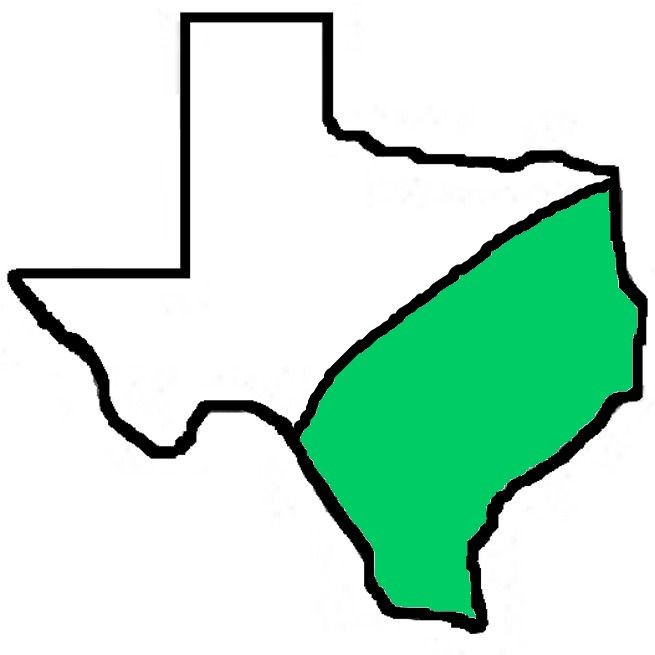Moths of the Lower Rio Grande Valley
Less Common, but Regular Moths
Noctuids & Nolas

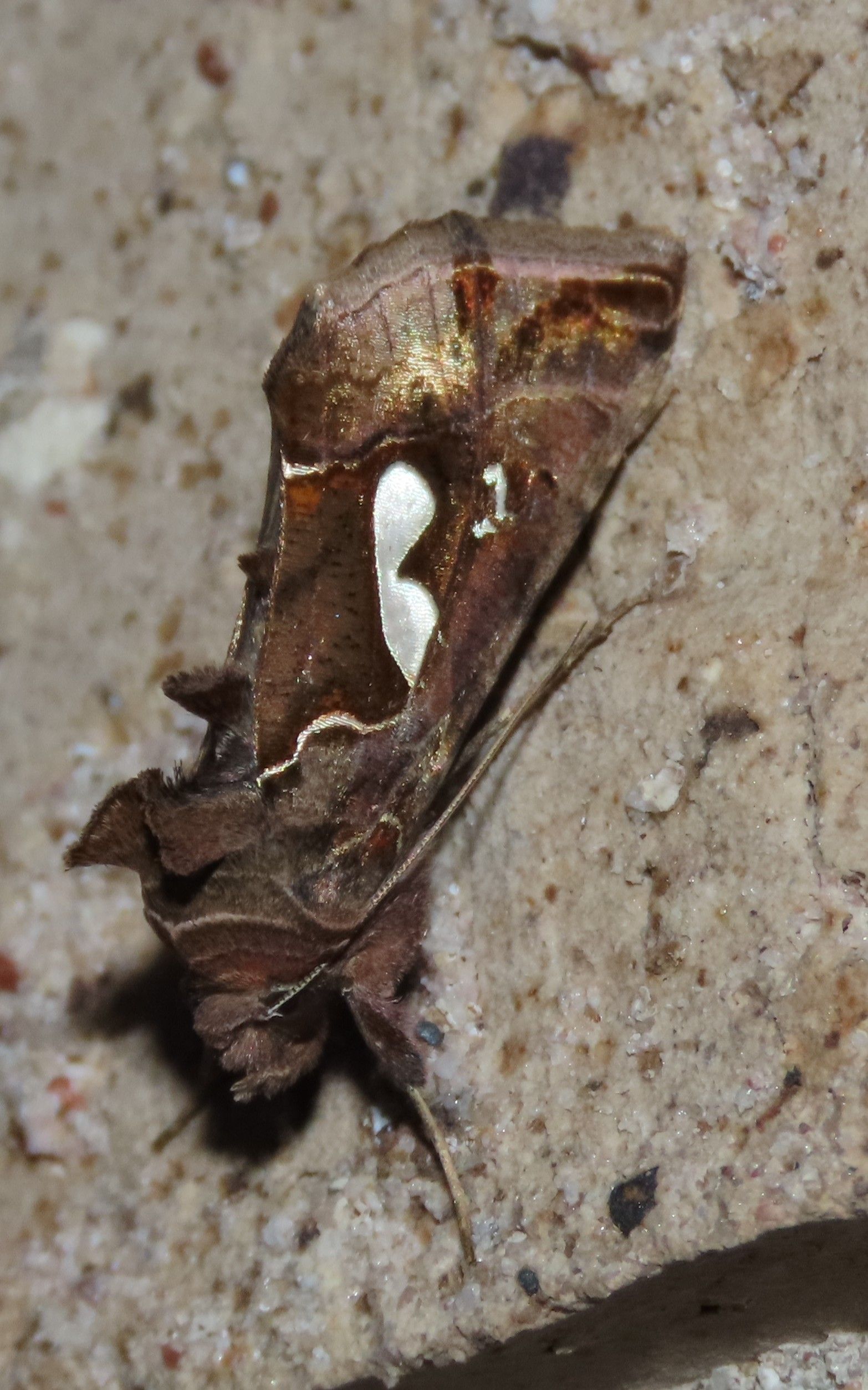
Bilobed Looper (Megalographa biloba)
Whether light, dark, or anything in between, this looper is easily identified by its "cool shades"-shaped ("bi-lobed") stigma! Recorded January to March, with records in October.


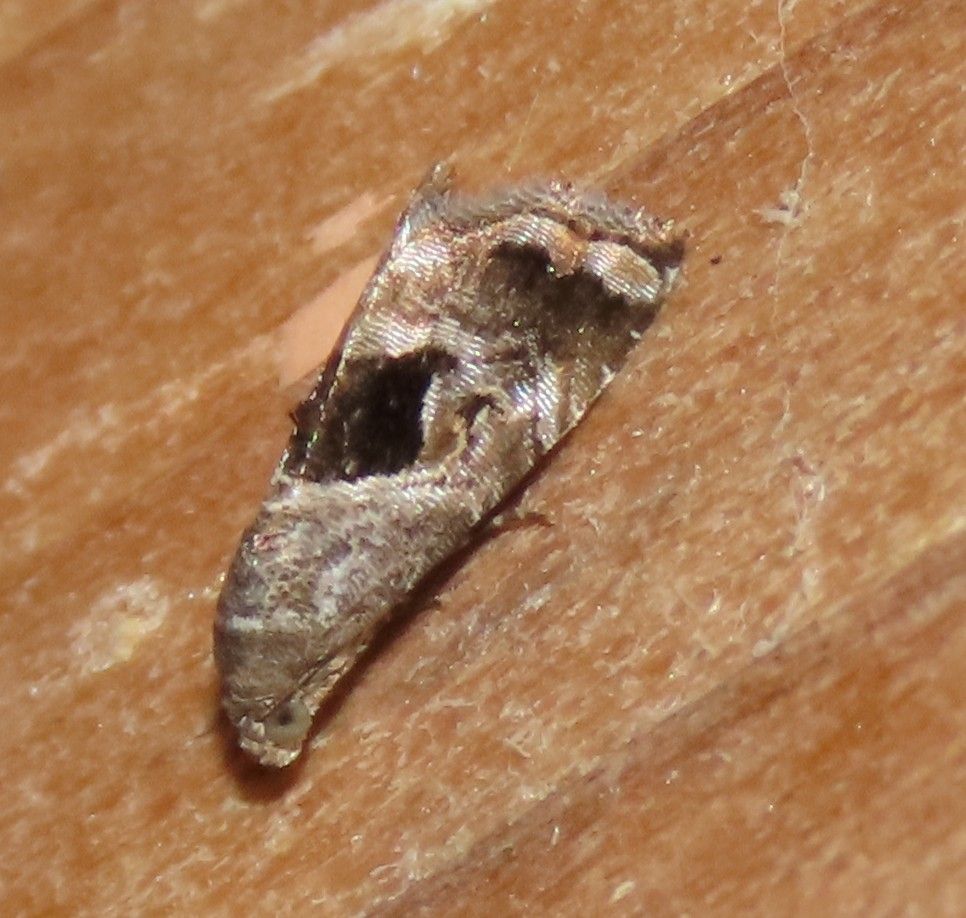
Harp-winged Tripudia (Tripudia quadrifera)
A very tiny light brown moth with a distinctive dark brown saddle in the median area of the forewings. Recorded July to November, with records in January, March, and May.

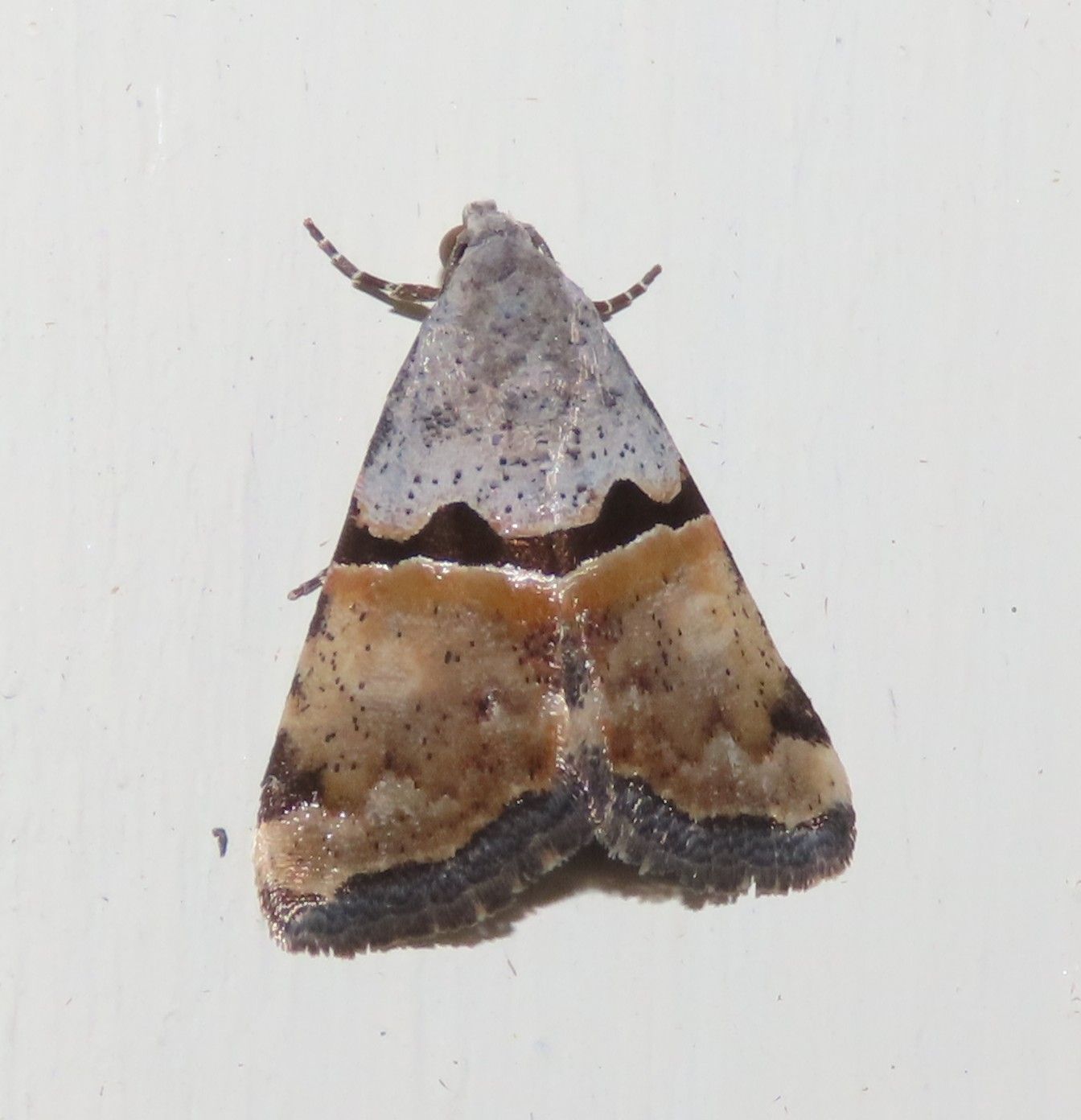
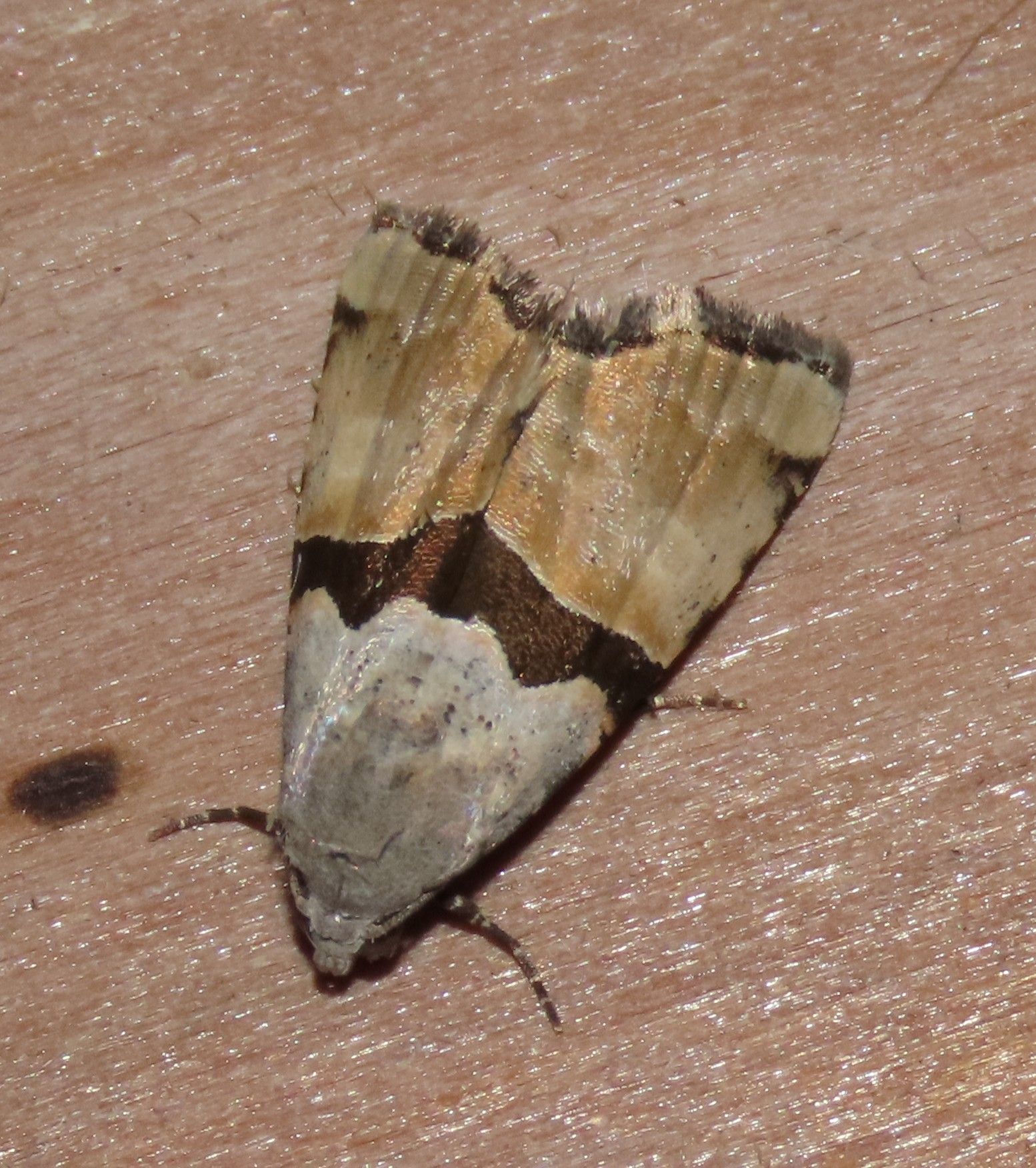

Sharp-banded Cobubatha (Cobubatha orthozona)
One of three similar glyphs that occur in the LRGV, the Sharp-banded has two noticeable humps in the median band. Told from the Divided Cobubatha by the "color reversal": Sharp-banded is gray basally with a brownish "skirt", whereas the Divided is brown basally with a gray "skirt". Recorded January to May, with records in October.
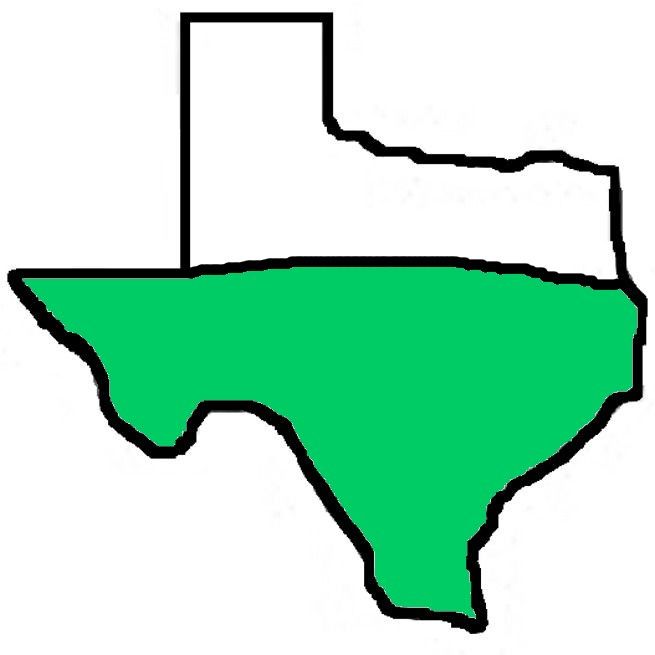
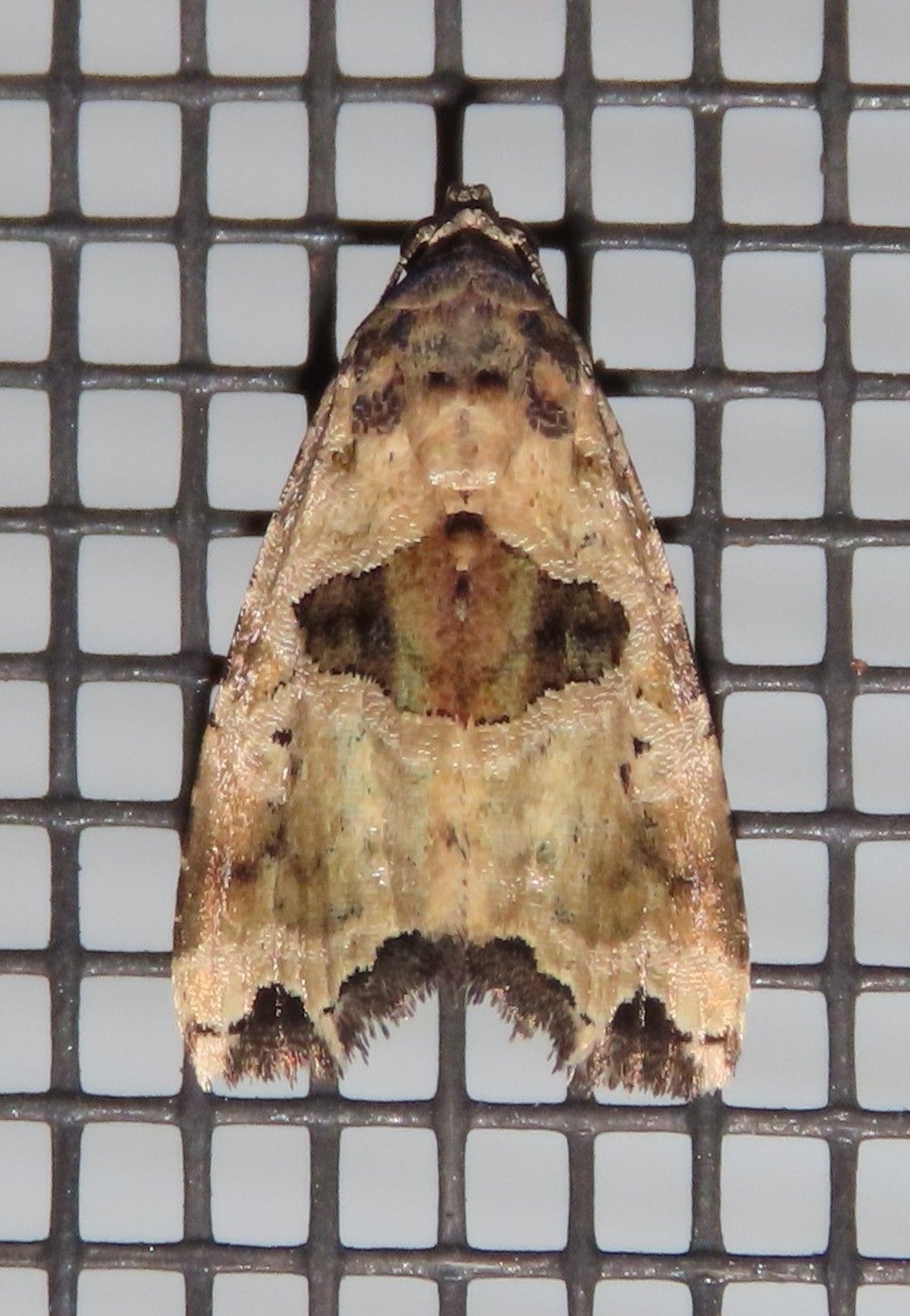
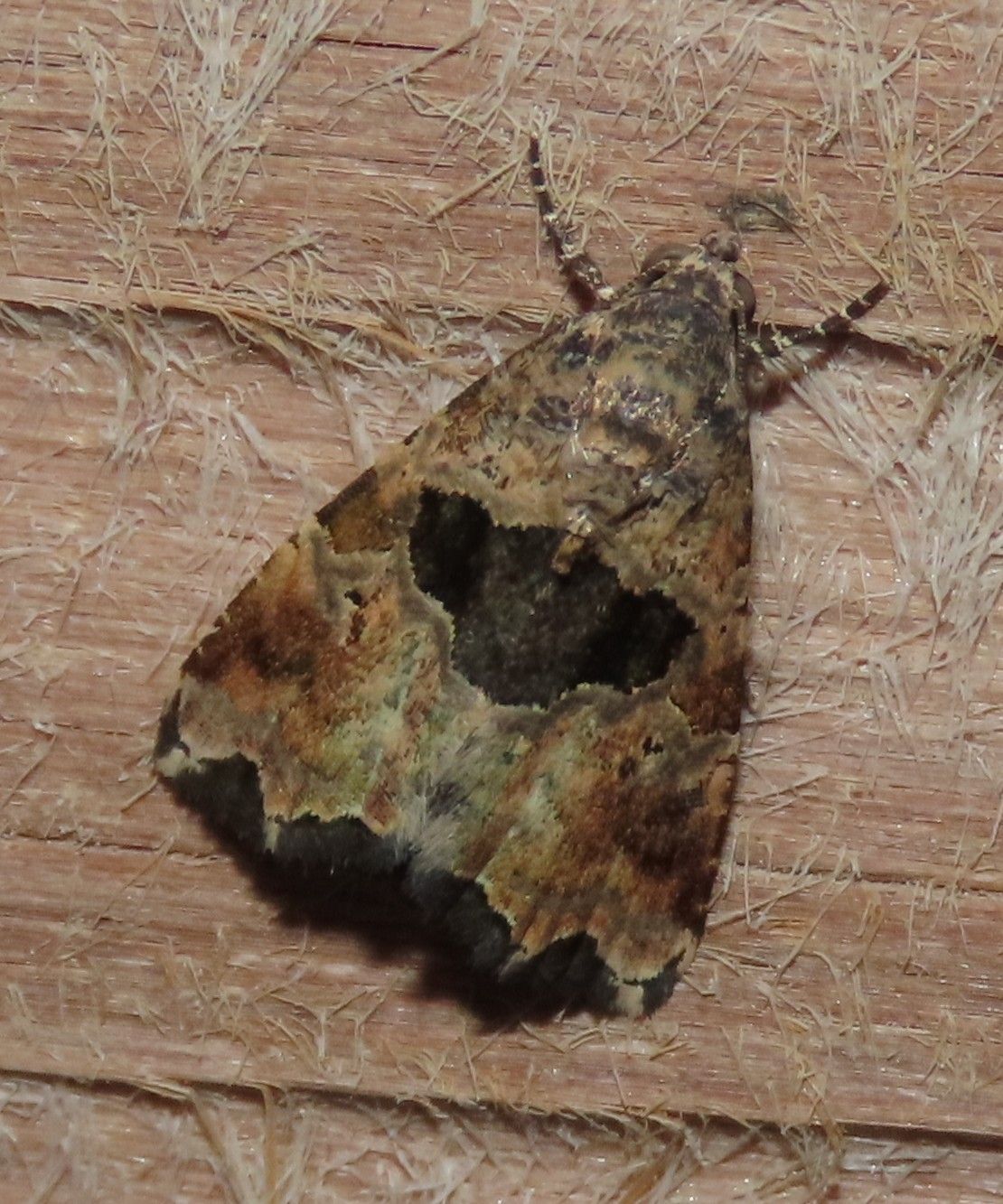
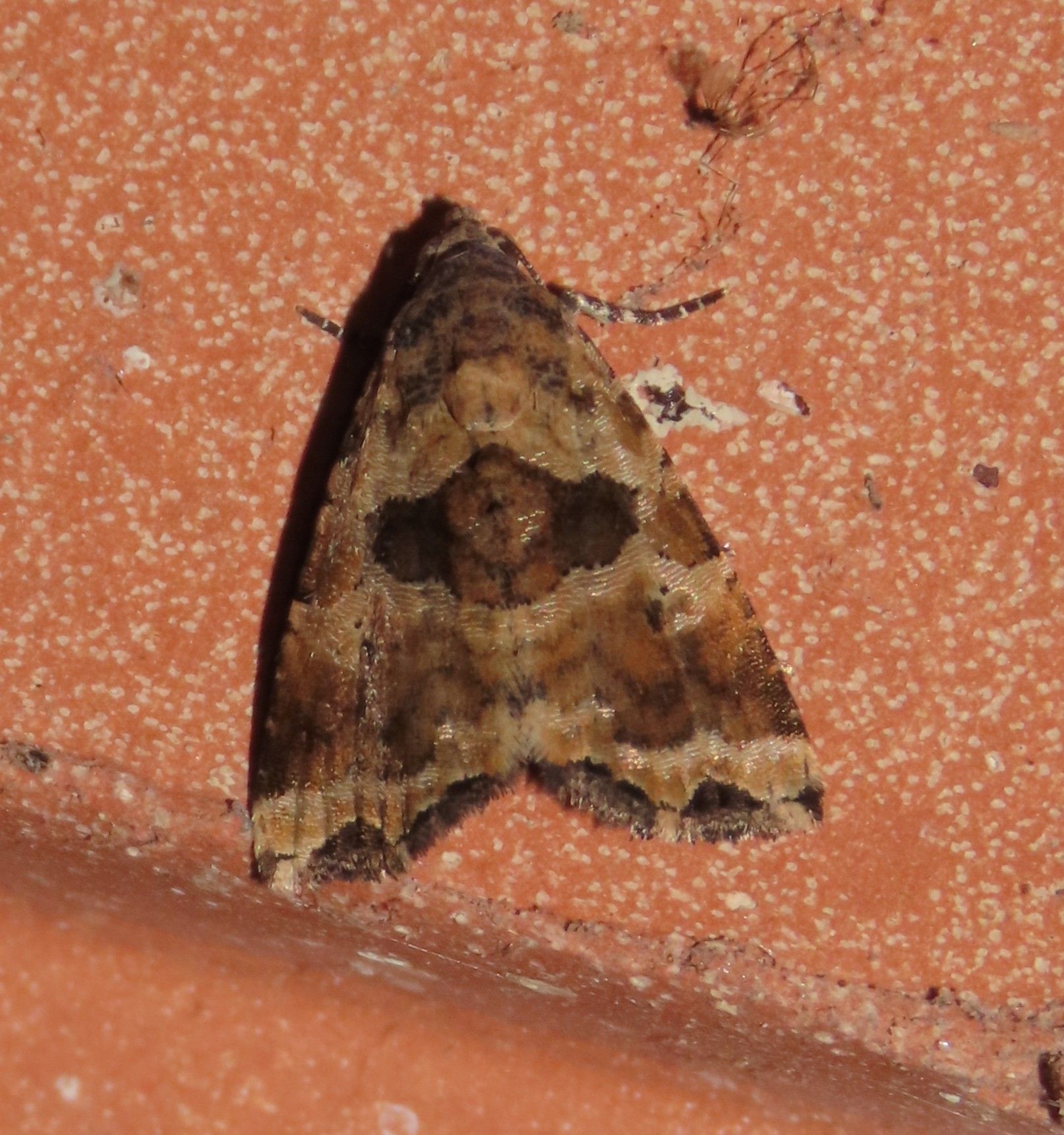
Patchy Cobubatha (Cobubatha metaspilaris)
The distinguishing field mark on this little glyph is the oddly-shaped median patch, like a circle with handles! The median band on some Dark-banded Cobubathas can be similar, but the ground color in the latter is two-toned (gray in the basal area, and brownish in the distal area). In Texas, this appears to be an LRGV specialty, but it also occurs in southeast Arizona and Florida. Recorded May to July and September to December.
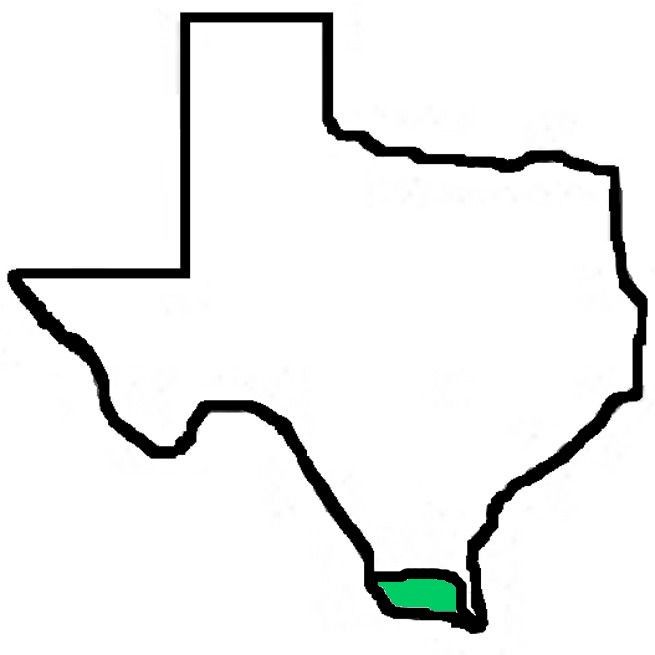

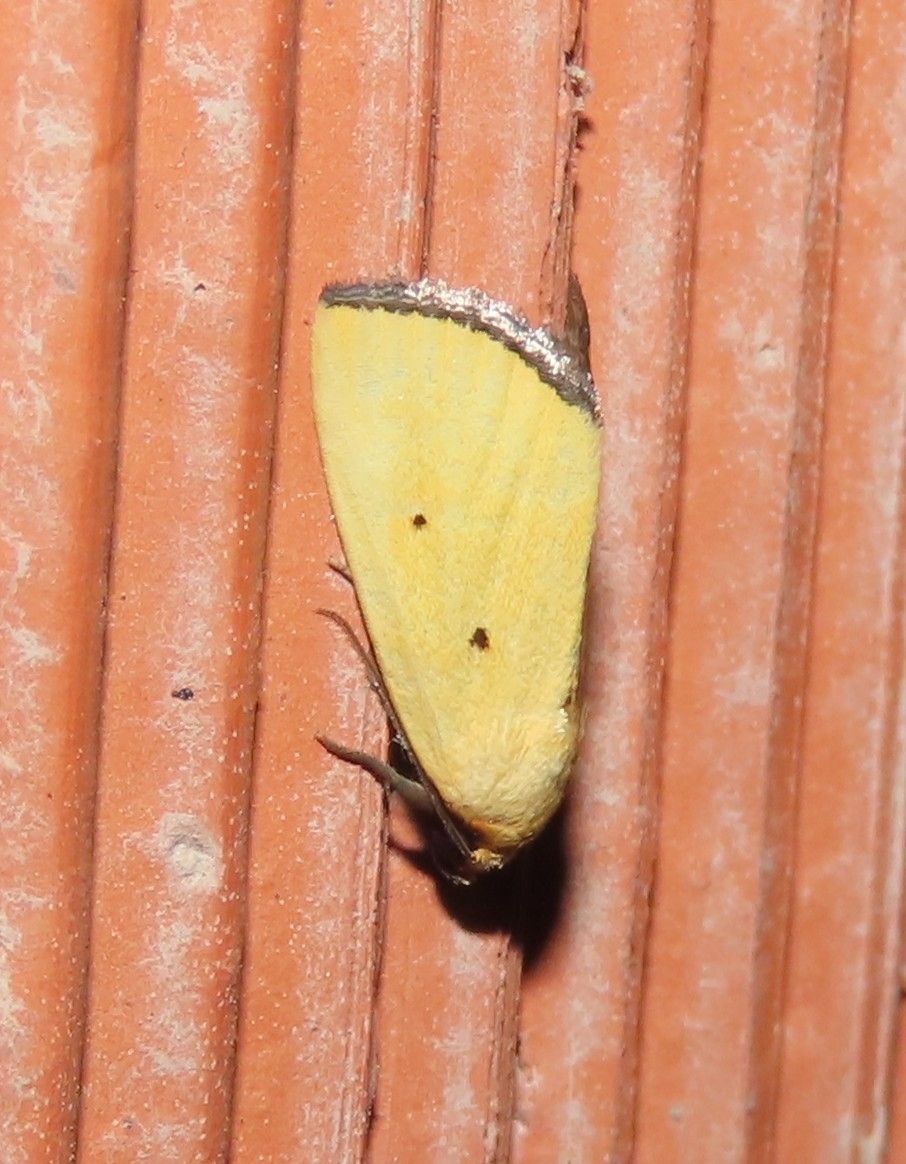
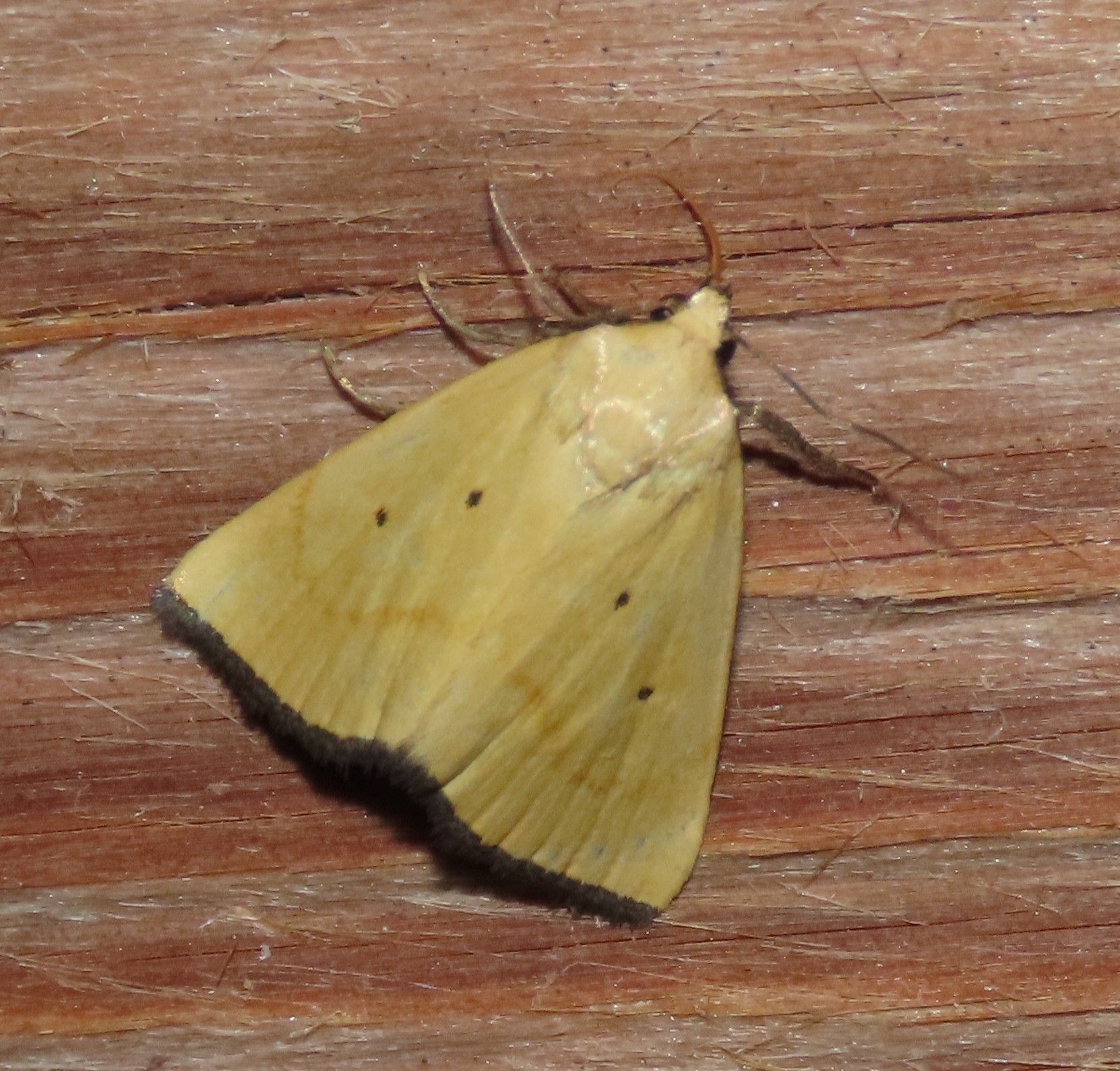
Black-bordered Lemon Moth (Marimatha nigrofimbria)
The most frequent of the three lemon moths that show up in the LRGV, this species typically has only two dots on the forewing, whereas the other two will show three (although that third dot may be very weak). Some individuals will show a faint brown PM line (right), like the less frequent Brown-lined Lemon Moth (Marimatha piscimala), but this latter species will have the three dots. Recorded May to November.
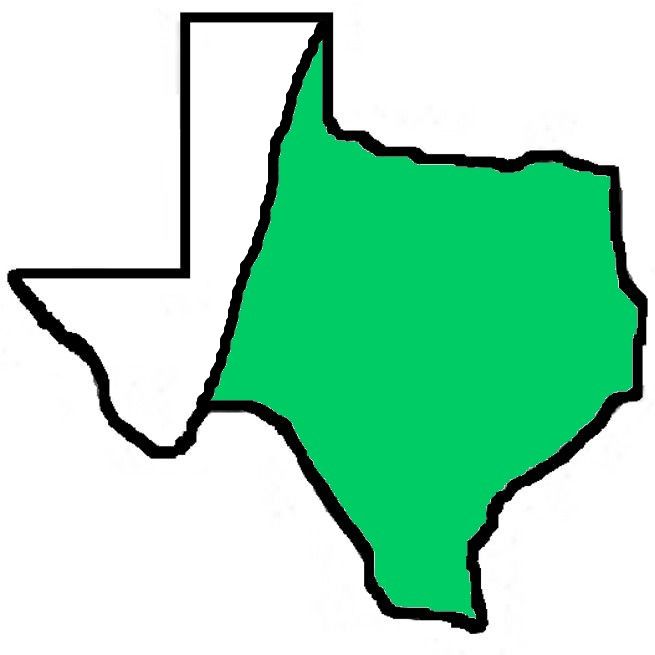
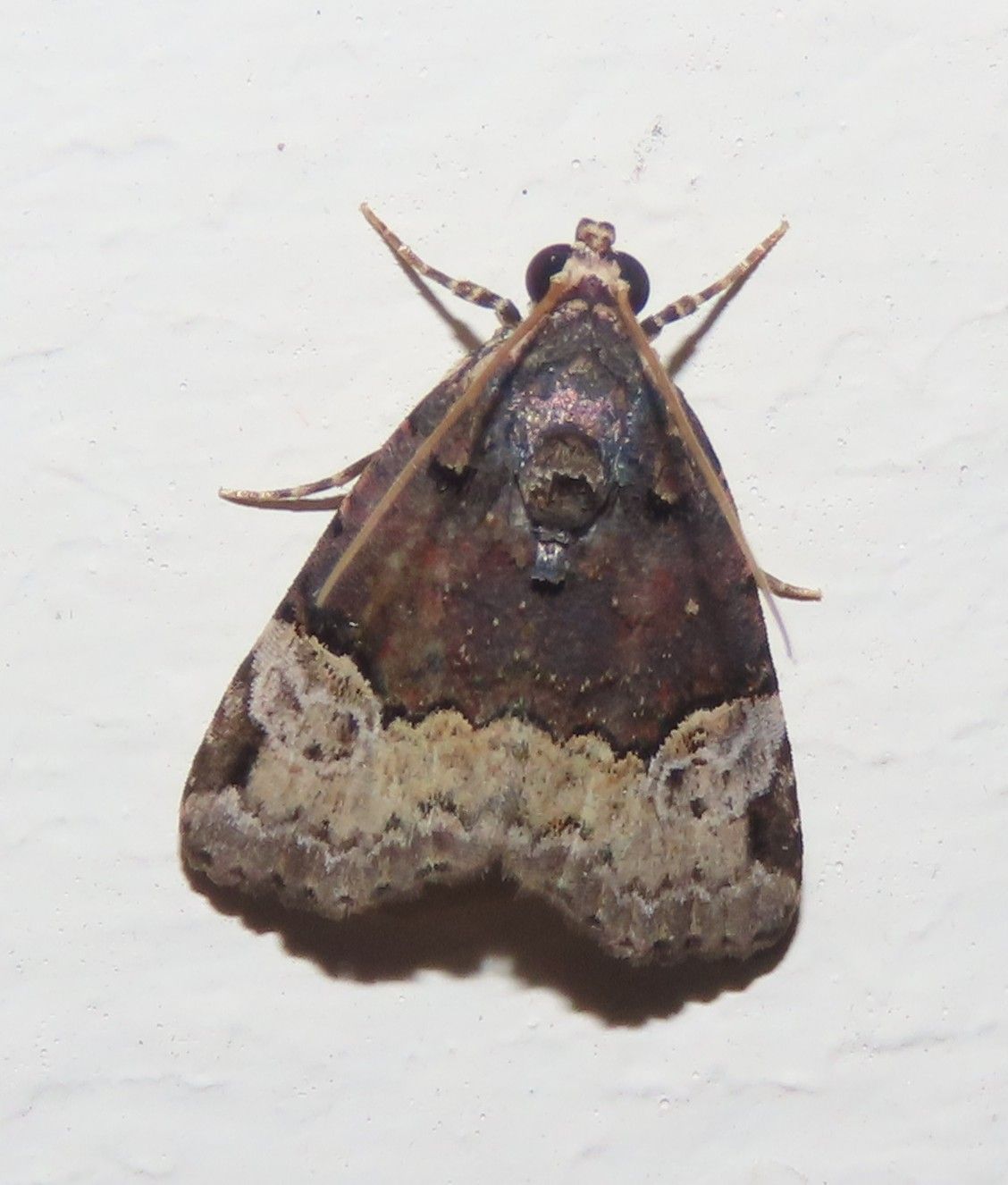
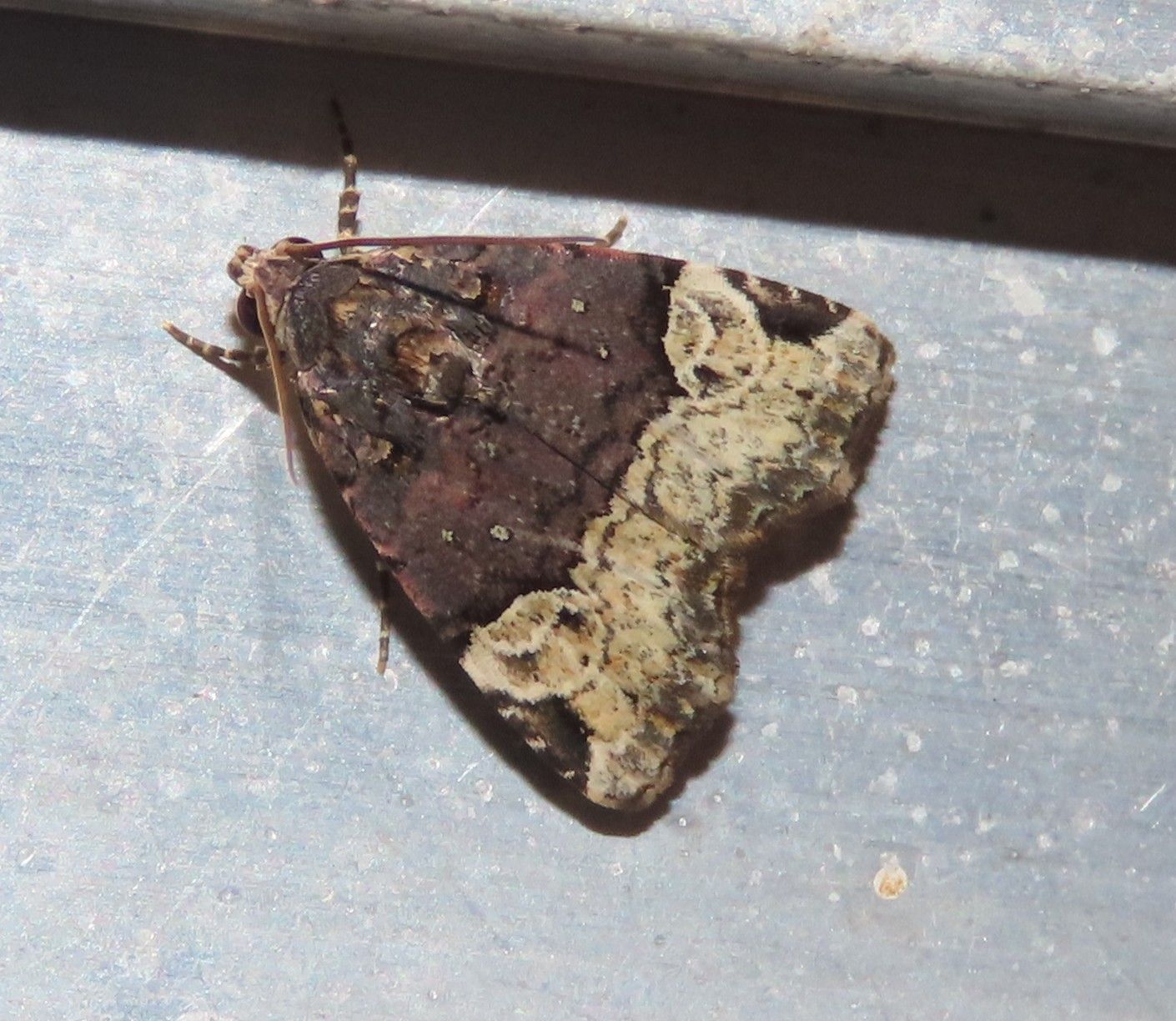
Catilina Brown (Ozarba catilina)
This is probably the easiest of the Ozarbas to identify: dark chocolate brown with a contrasting straw-colored ST area, punctuated with a dark brown patch on the costa at the end of the ST line. A mid-to-south Texas specialty. Recorded April to May and July to October, with records in February.

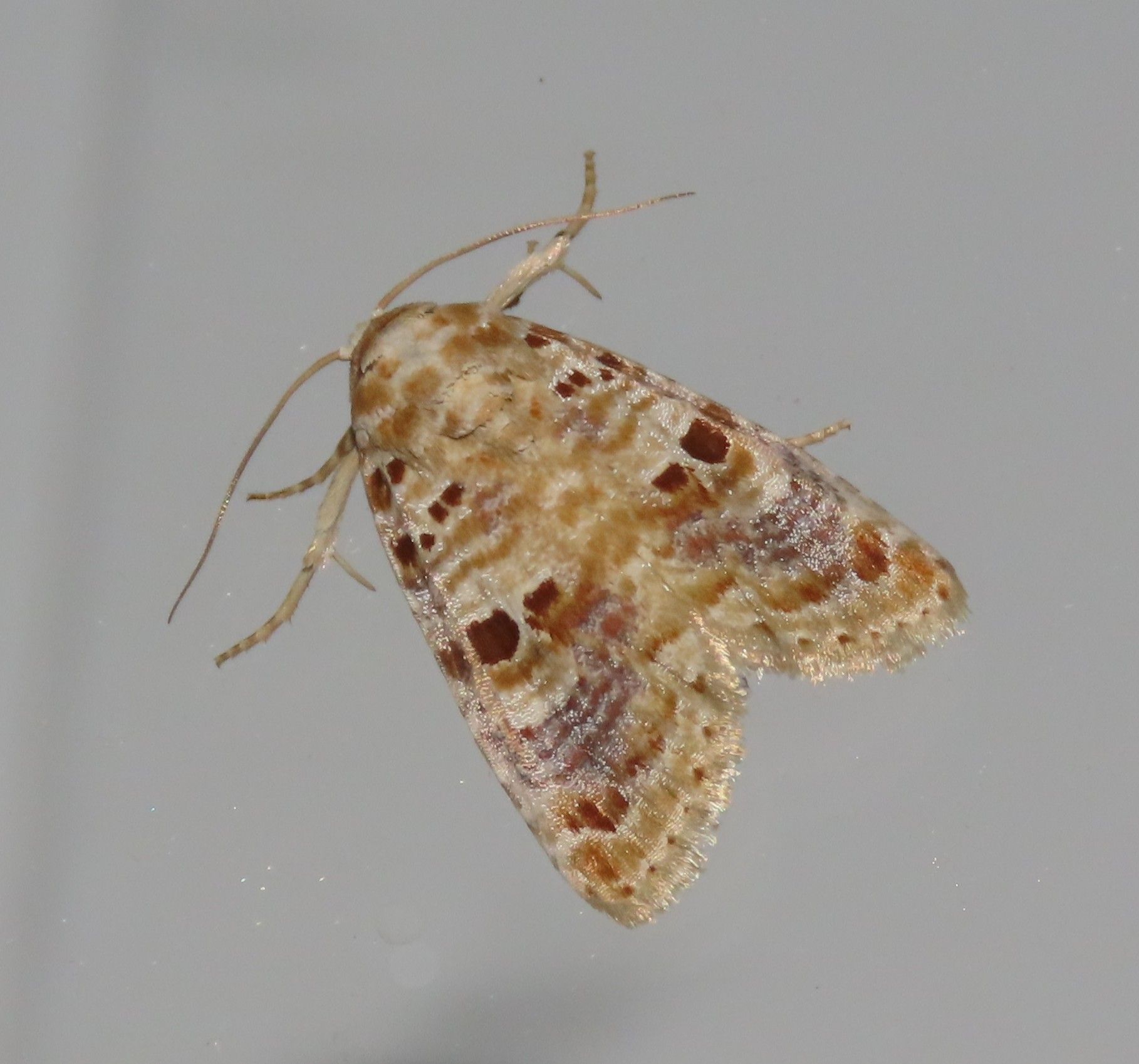
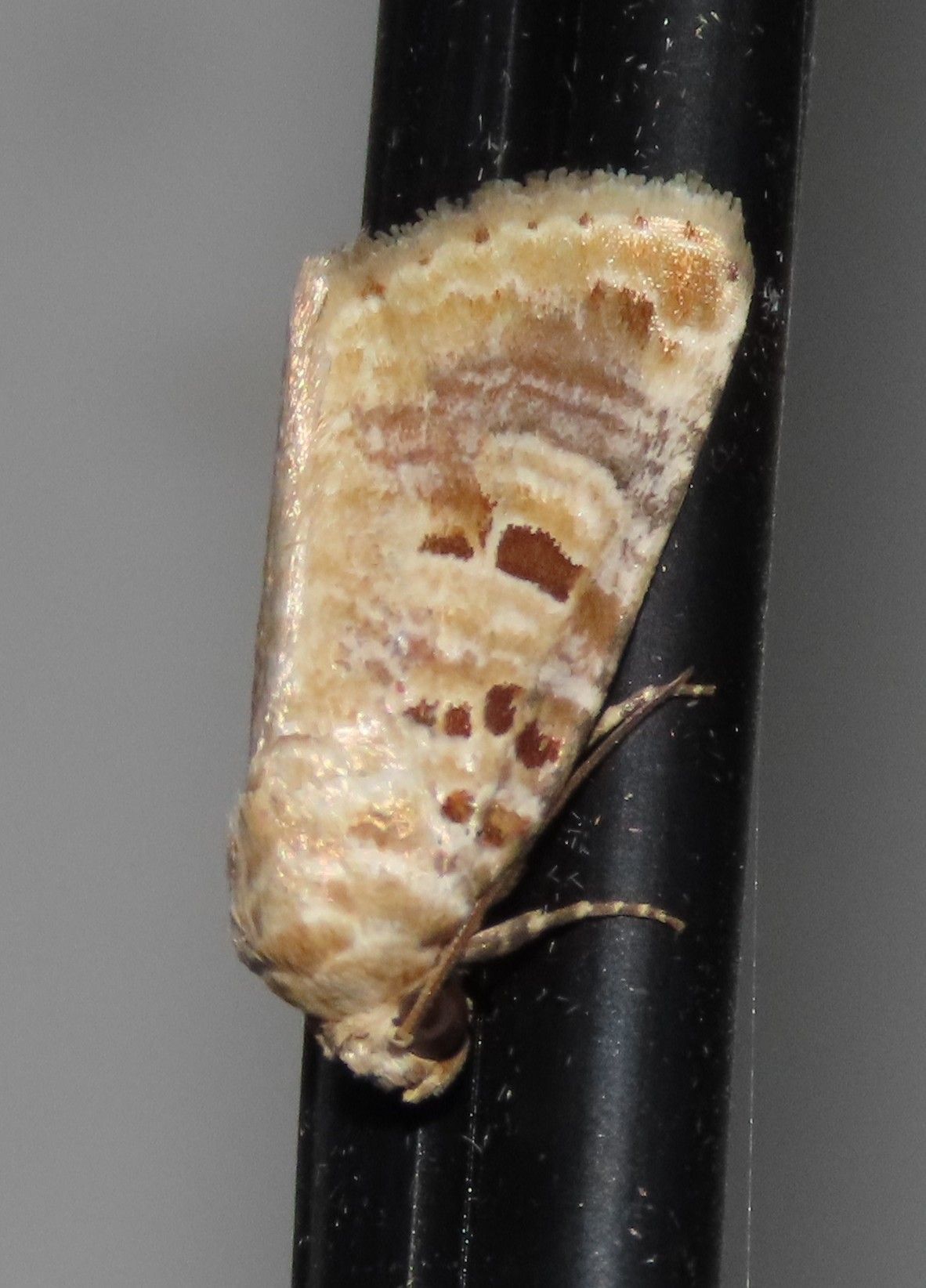
Tiger Lantana Moth (Diastema tigris)
This straw-colored moth has subtle white and rusty barring and chestnut chunks in the PM, basal, and AM areas. Also known as Lantana Control Moth. Recorded May to October.
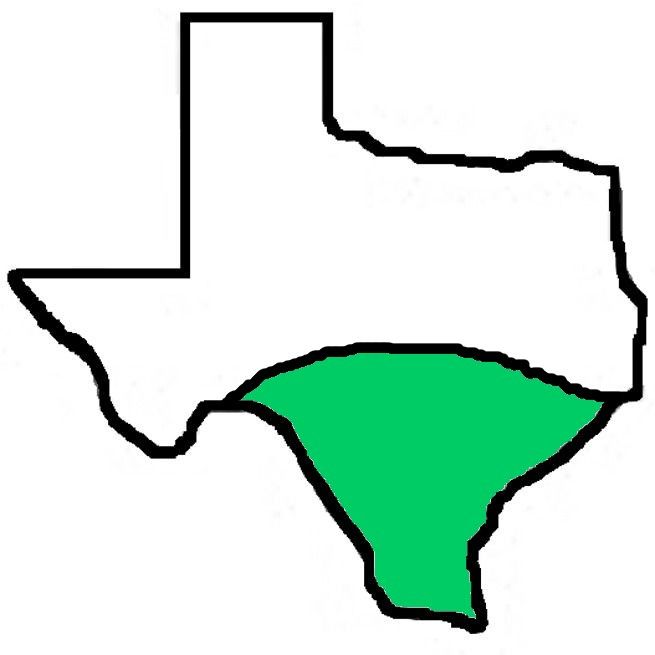
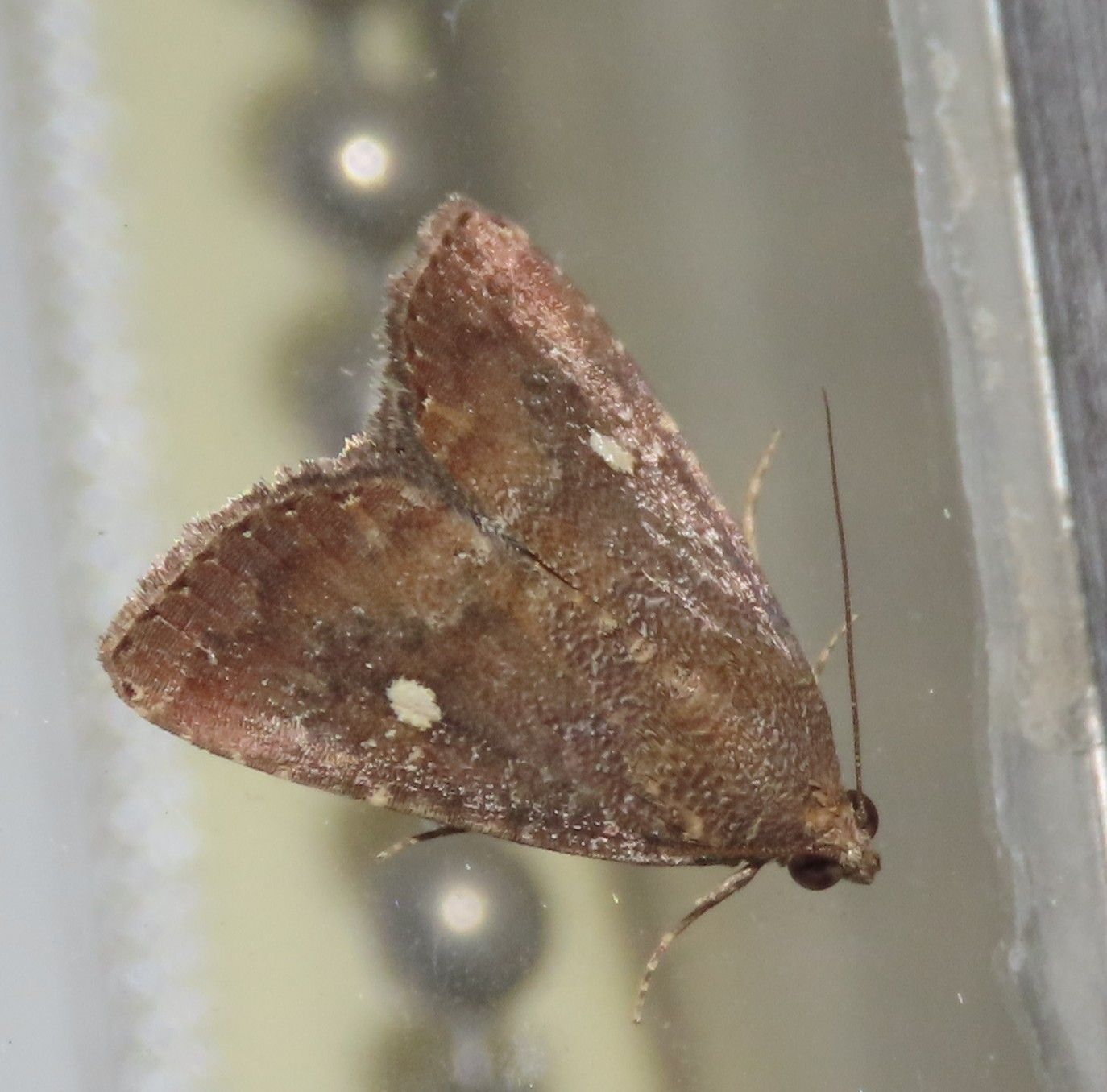
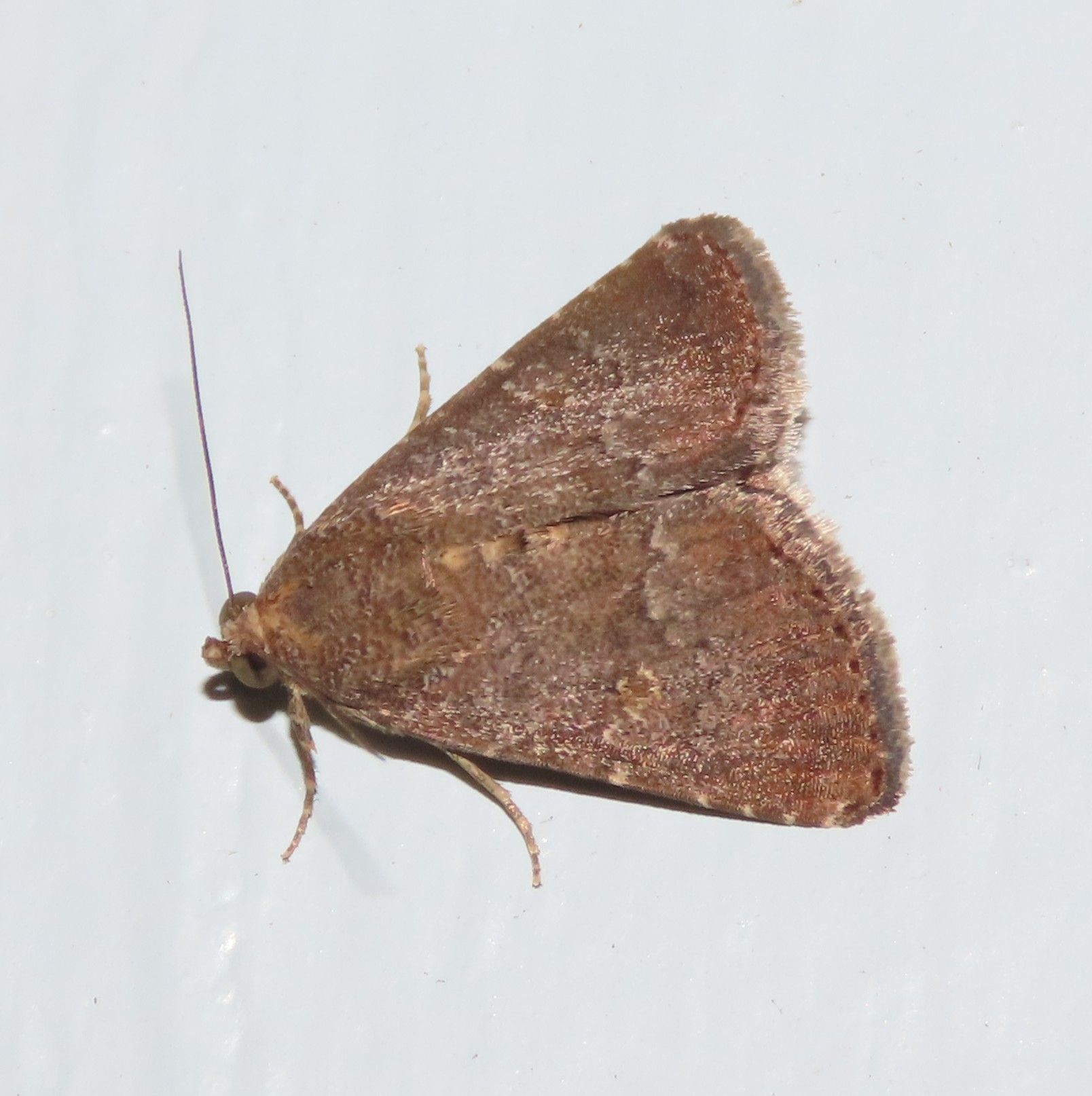
Eight-spot Moth (Amyna stricta)
This dark brown (sometimes rufous) moth is easy to ID when the white reniform spots are present, but sometimes those spots are orangish, like the bug on the right, turning them into one of those confusing little brown moths! Dull individuals still show a faint jagged PM line and the outline of a figure eight in the reniform spot, but another helpful clue might be the line of white dots along the costa. Recorded June to August, and October to March.
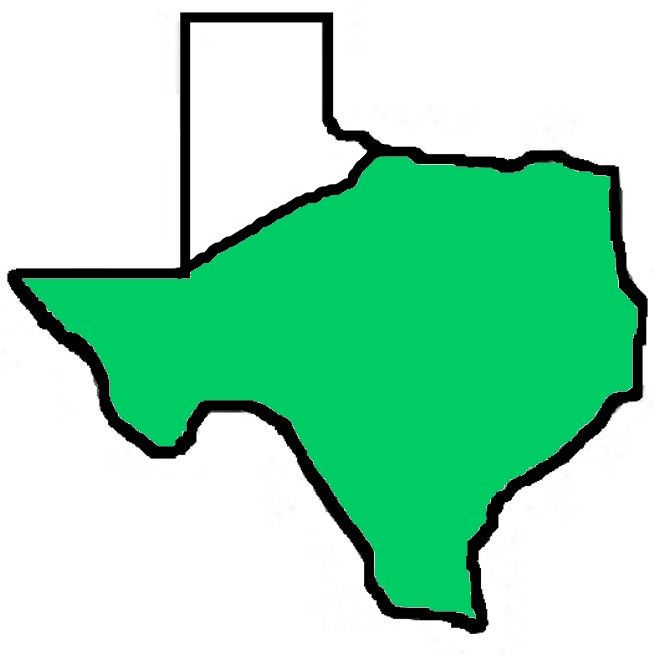
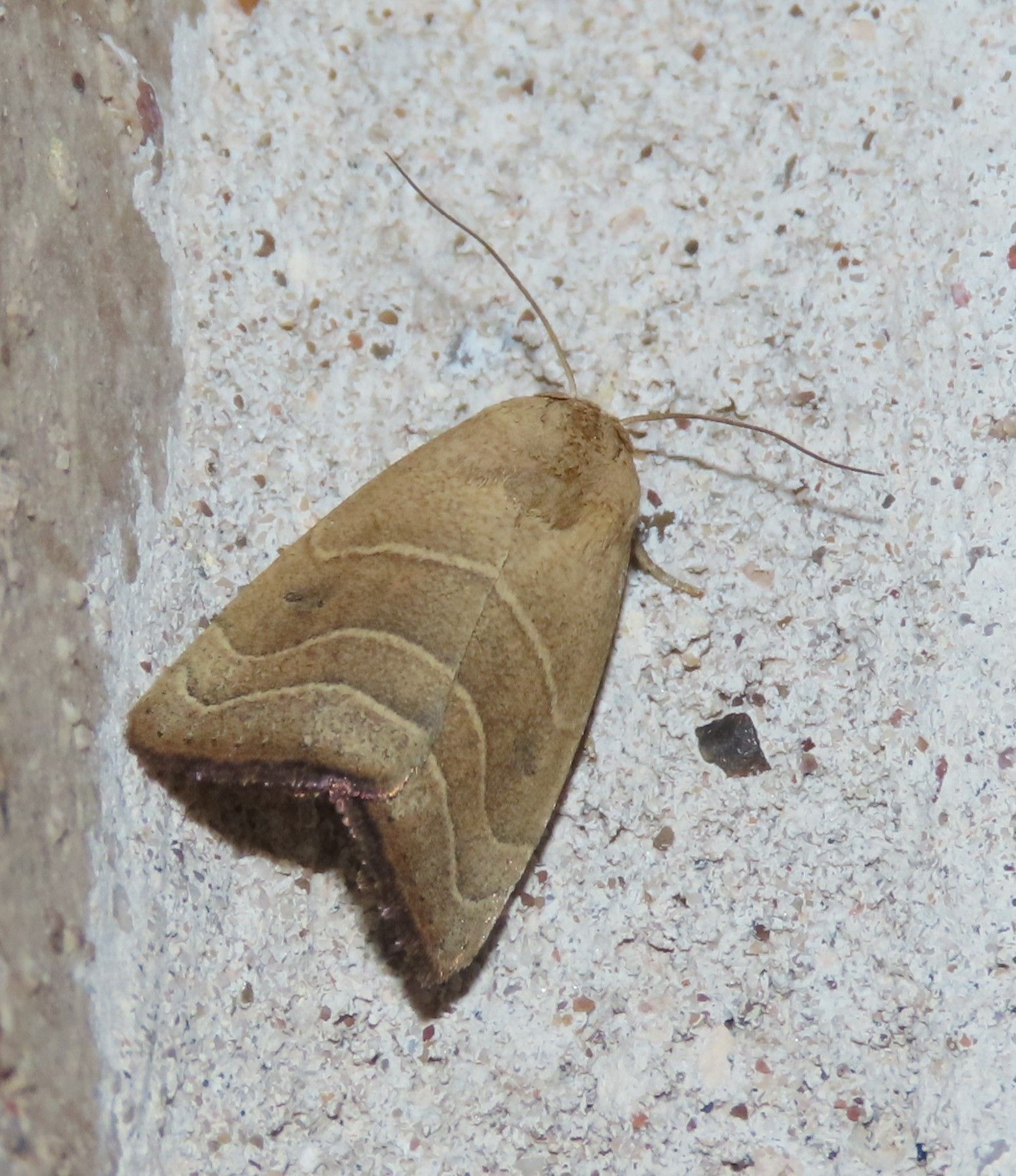
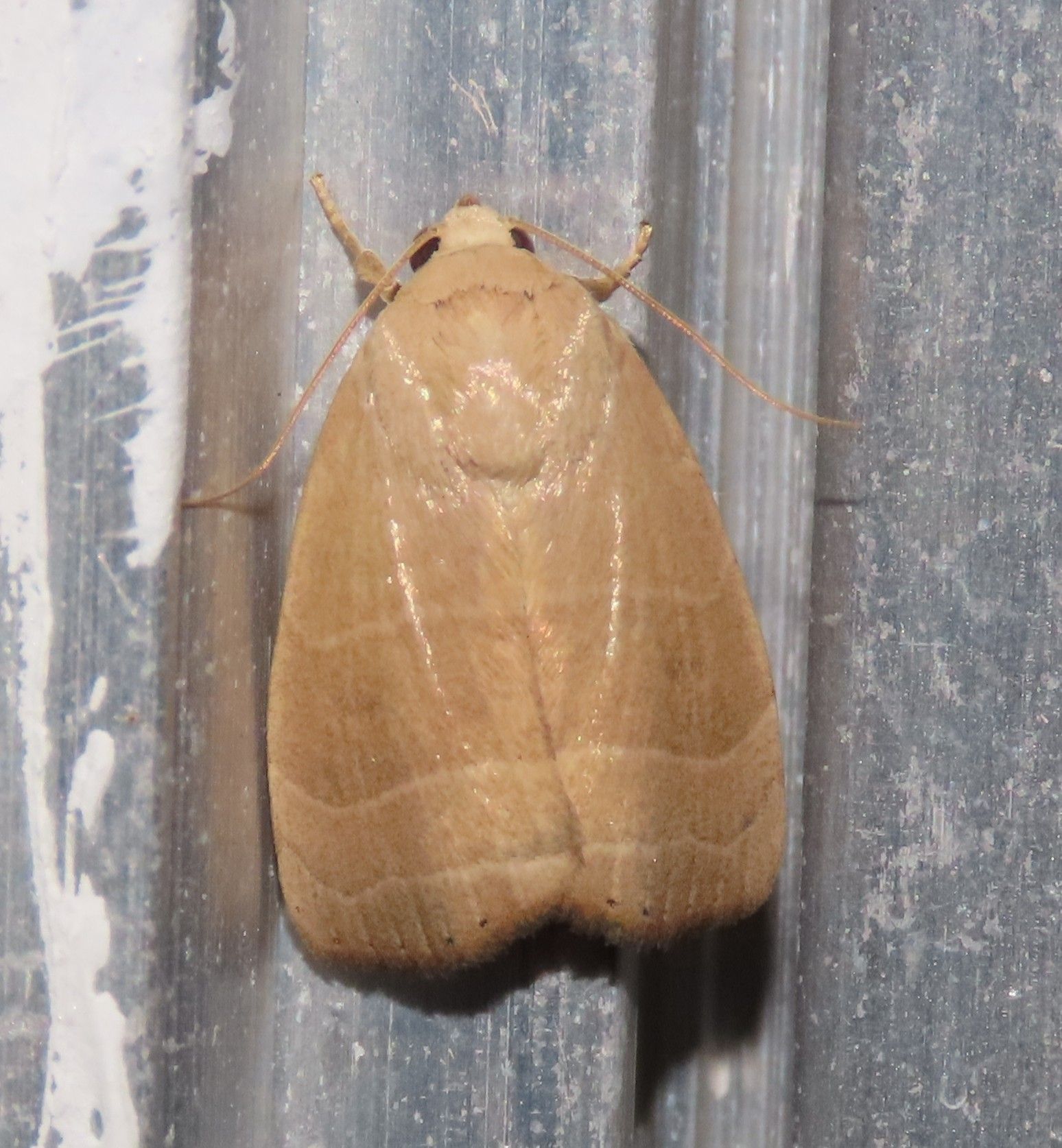
Wavy-lined Mallow Moth (Bagisara repanda)
One of several similar Bagisara moths, the Wavy-lined lives up to its name in that the three lines gently curve towards the costa with no sharp angles. Recorded May to August, and October to January.
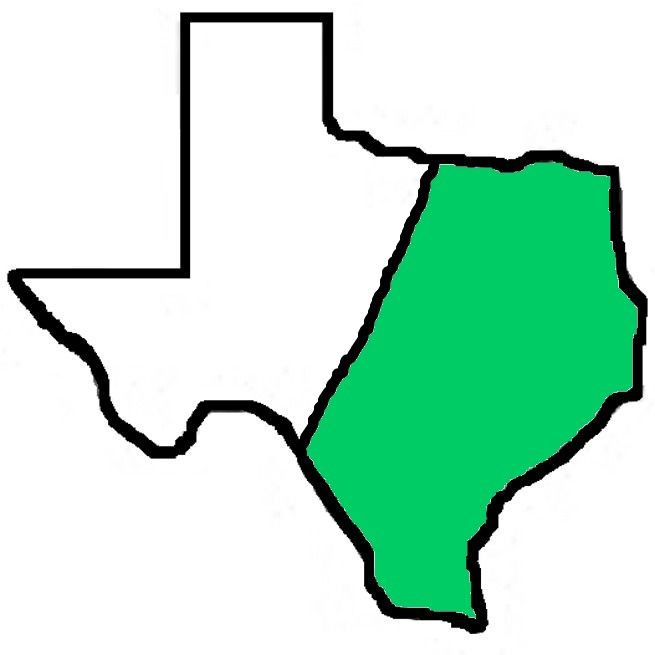
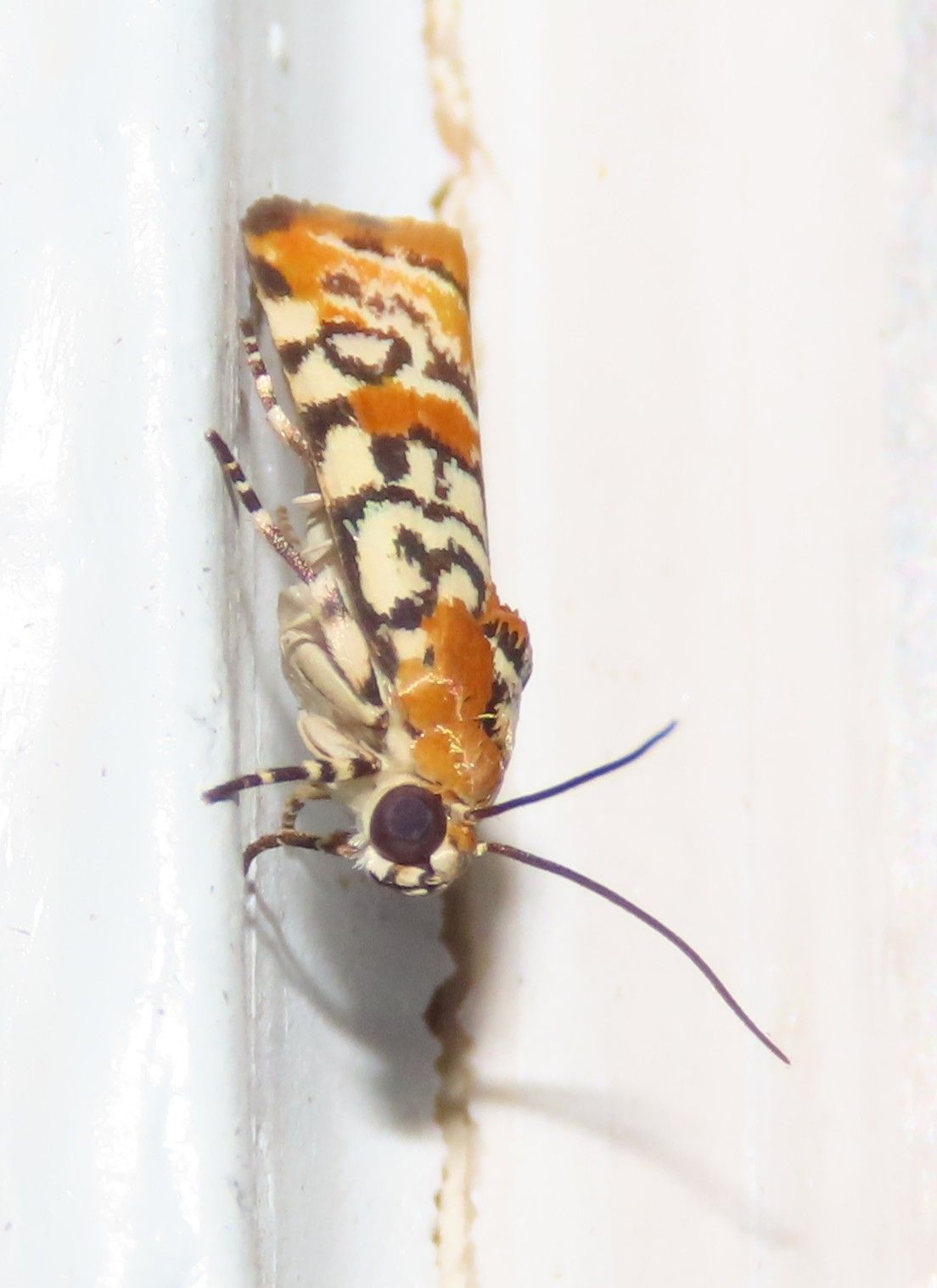
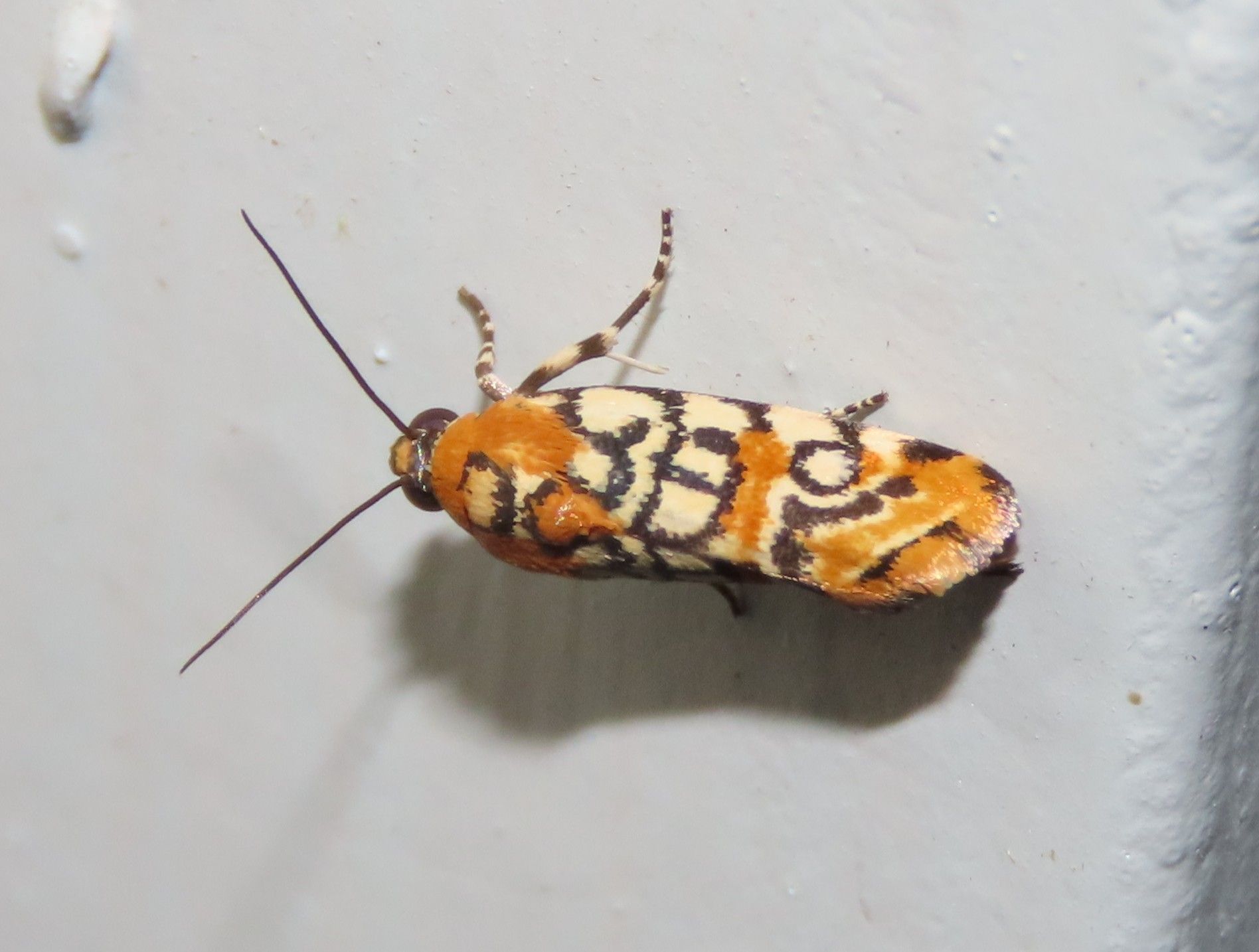
Spotted Spragueia (Spragueia guttata)
Superficially similar to the larger Ailanthus Webworm, but the patterns of orange, black, and white aren't as neatly "arranged" on the spragueia. A good clue is the circular reniform spot. Recorded June to November.

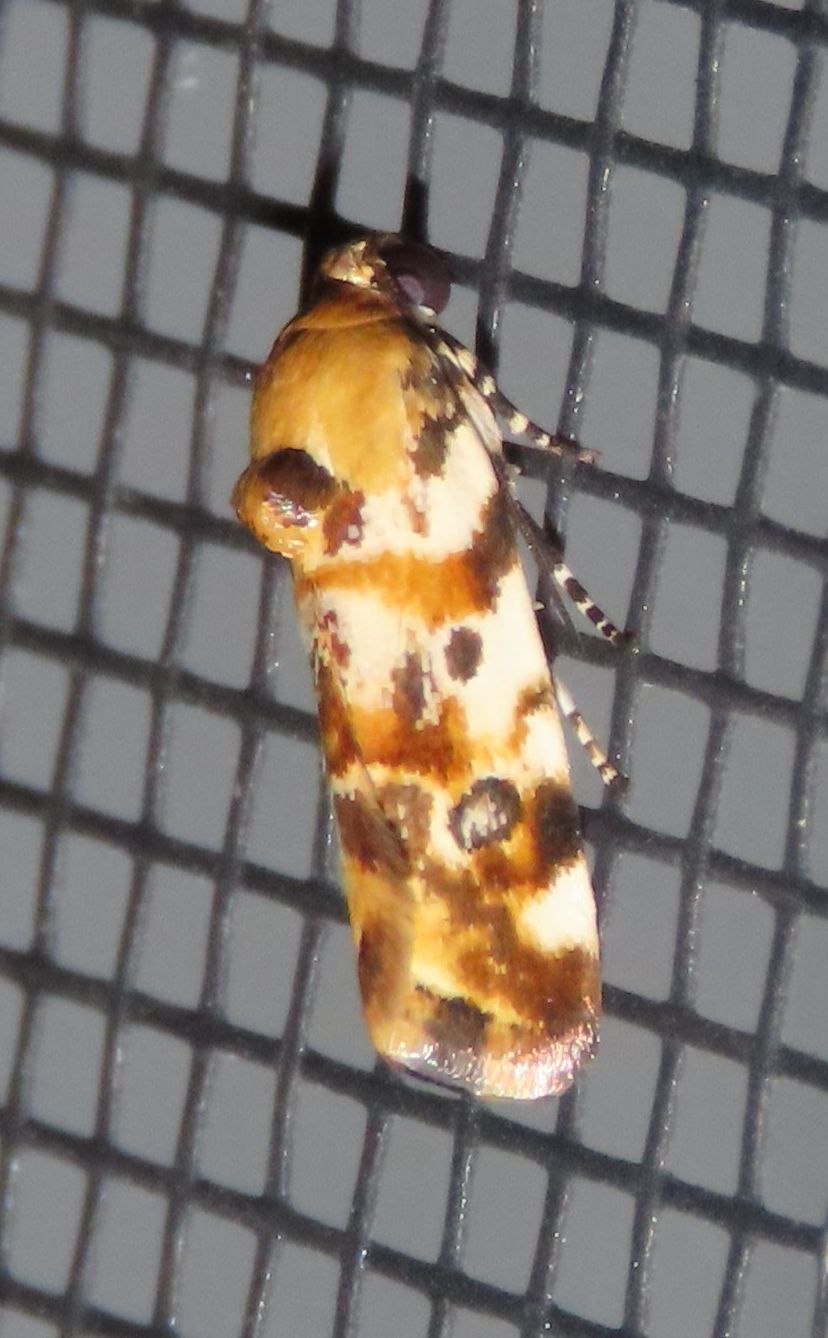
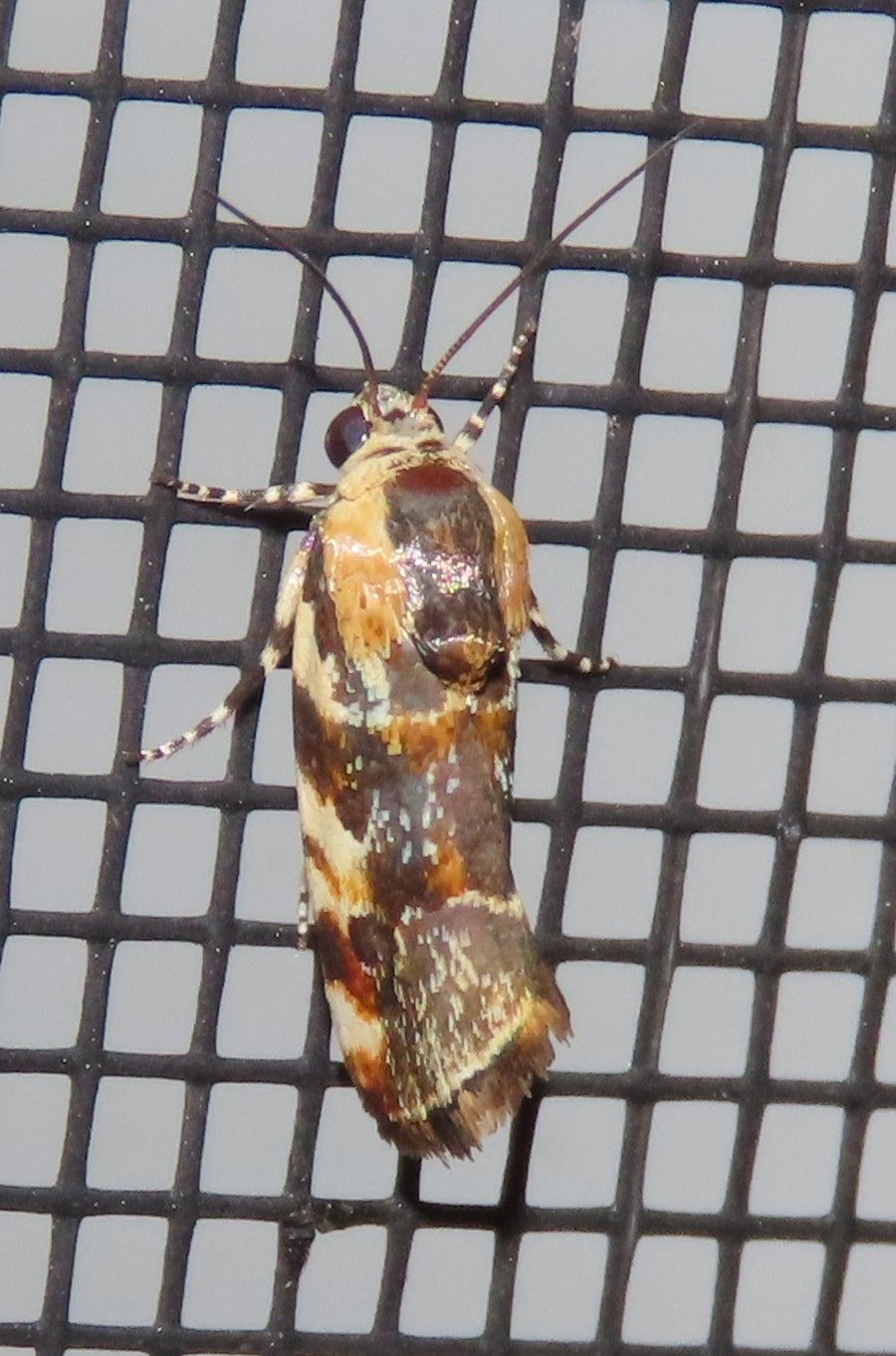
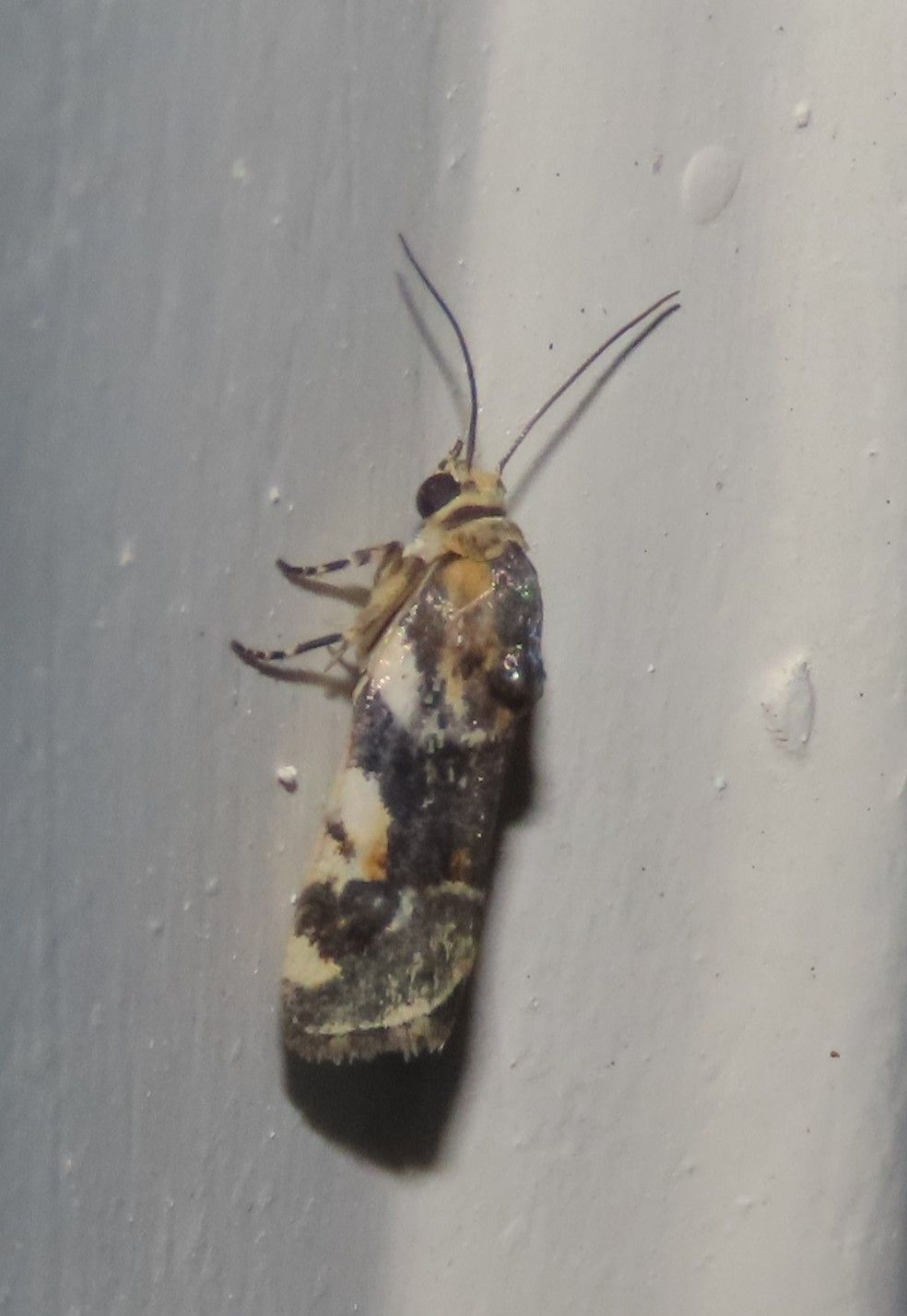
Jaguar Spragueia (Spragueia jaguaralis)
This strikingly-patterned bird-dropping moth occurs much less frequently than the Spotted Spragueia, and is best told from the Dusky-backed Spragueia (S. obatra, possible but yet to be seen by me in the LRGV) by the bicolored ST area, as opposed to an all-dark ST area shown by Dusky-backed. Both species can show the blackish rectangle on the thorax. Recorded July to October.
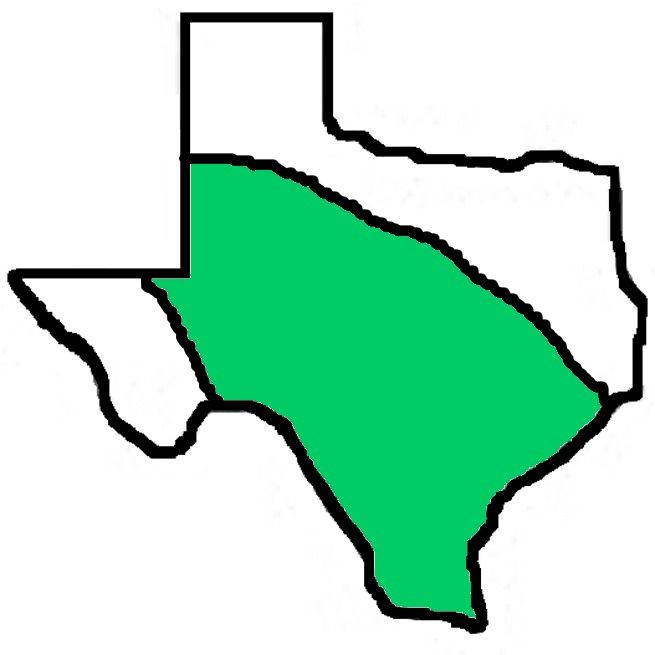
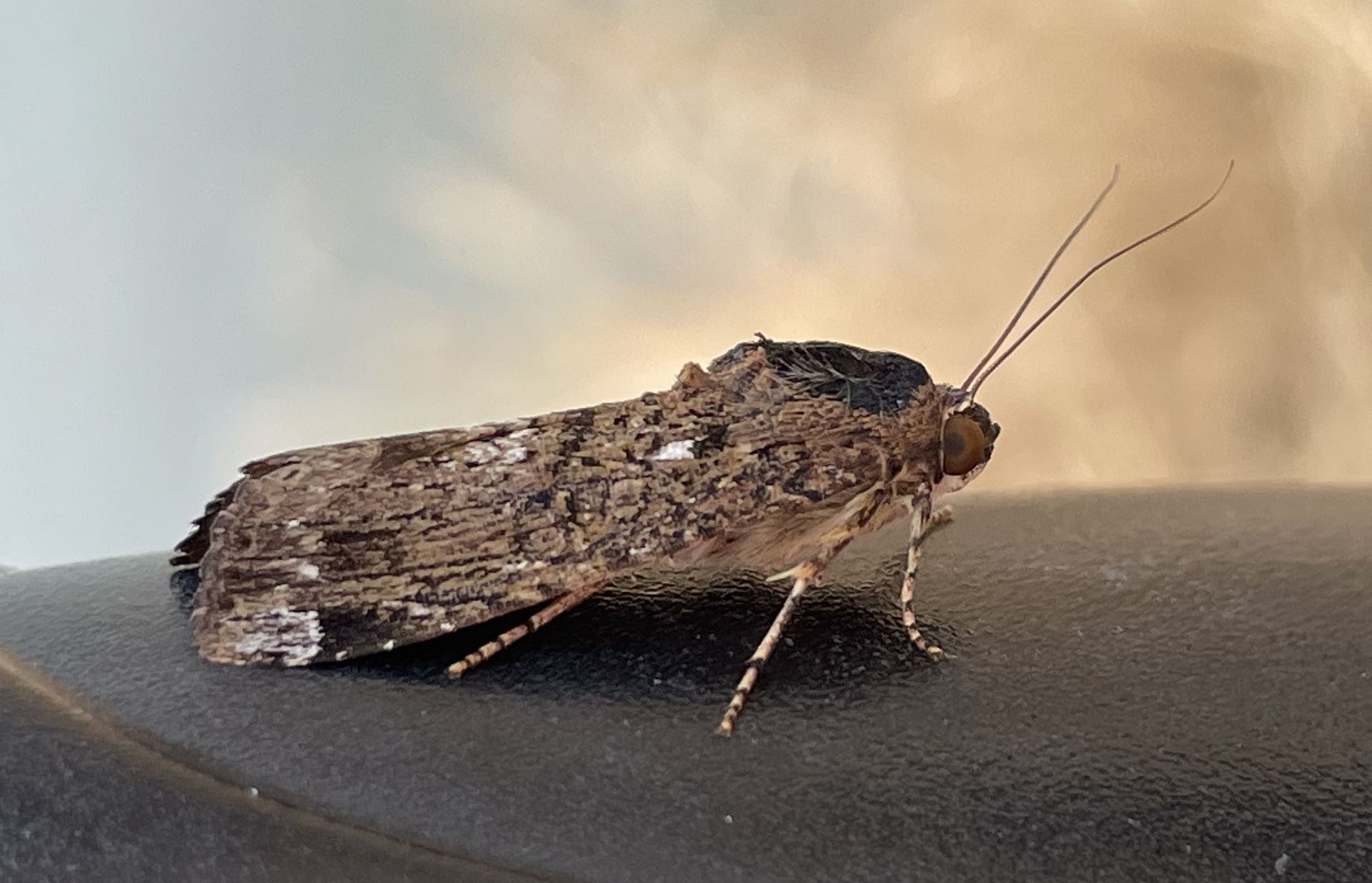
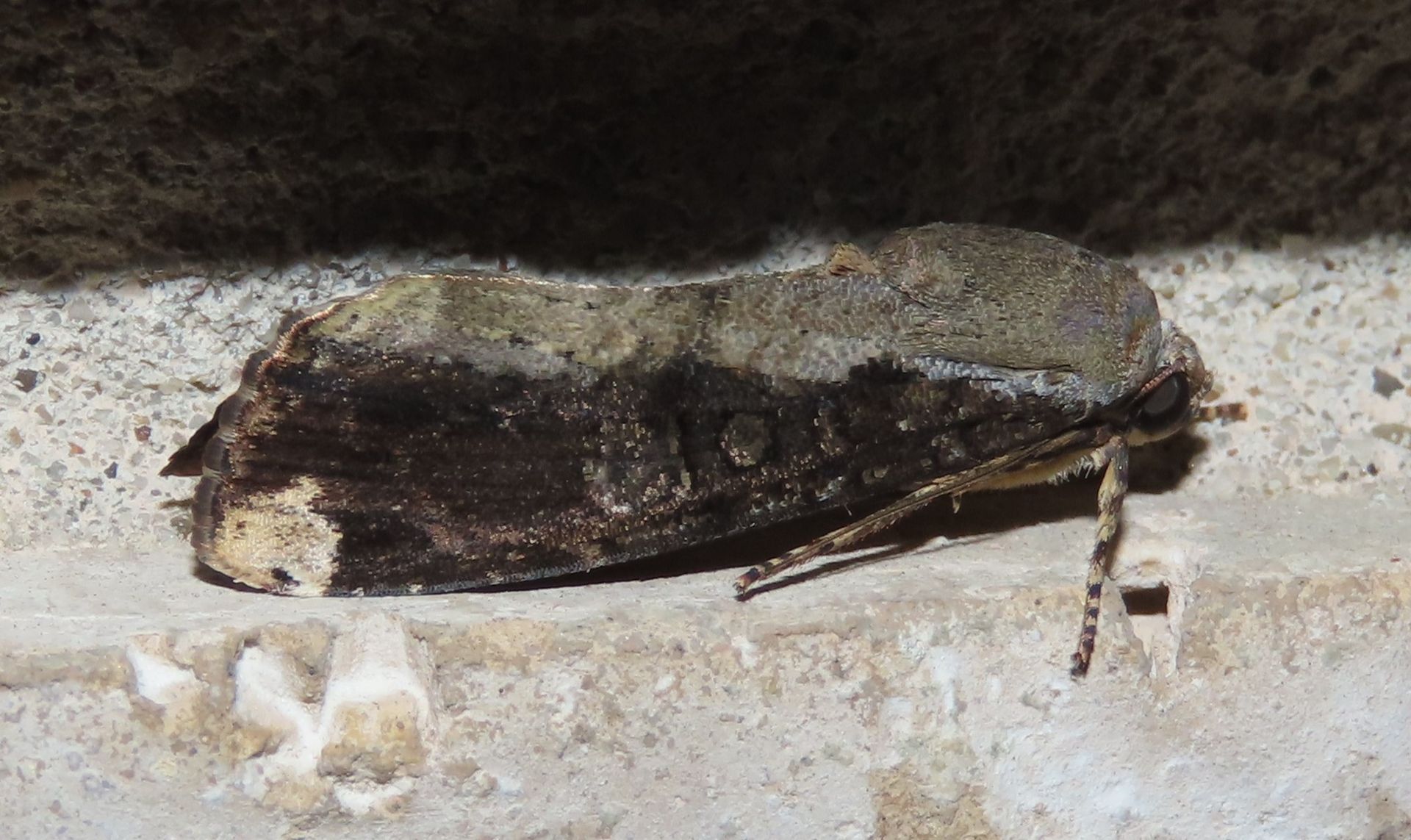
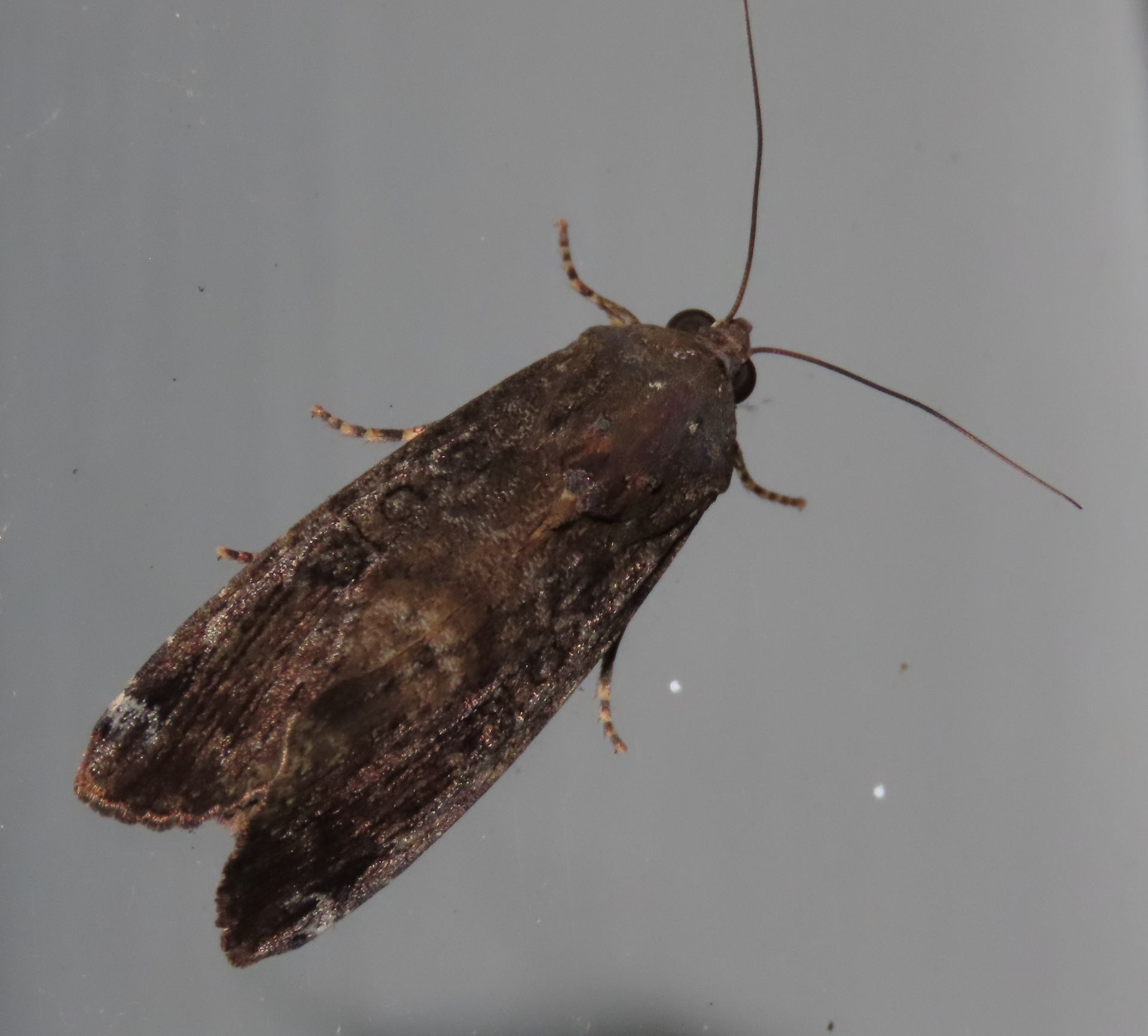
Variable Narrowwing (Magusa divaricata)
This medium-sized moth certainly lives up to its name - the bicolored form (center) is the easiest to ID, but the darker forms can be keyed out to this species by the white apical patch near the end of the forewing (may be obvious or faded). The rounded orbicular and reniform spots are present, but may not always be obvious. A tropical species that wanders north in the fall. Recorded November to February, with records in September.

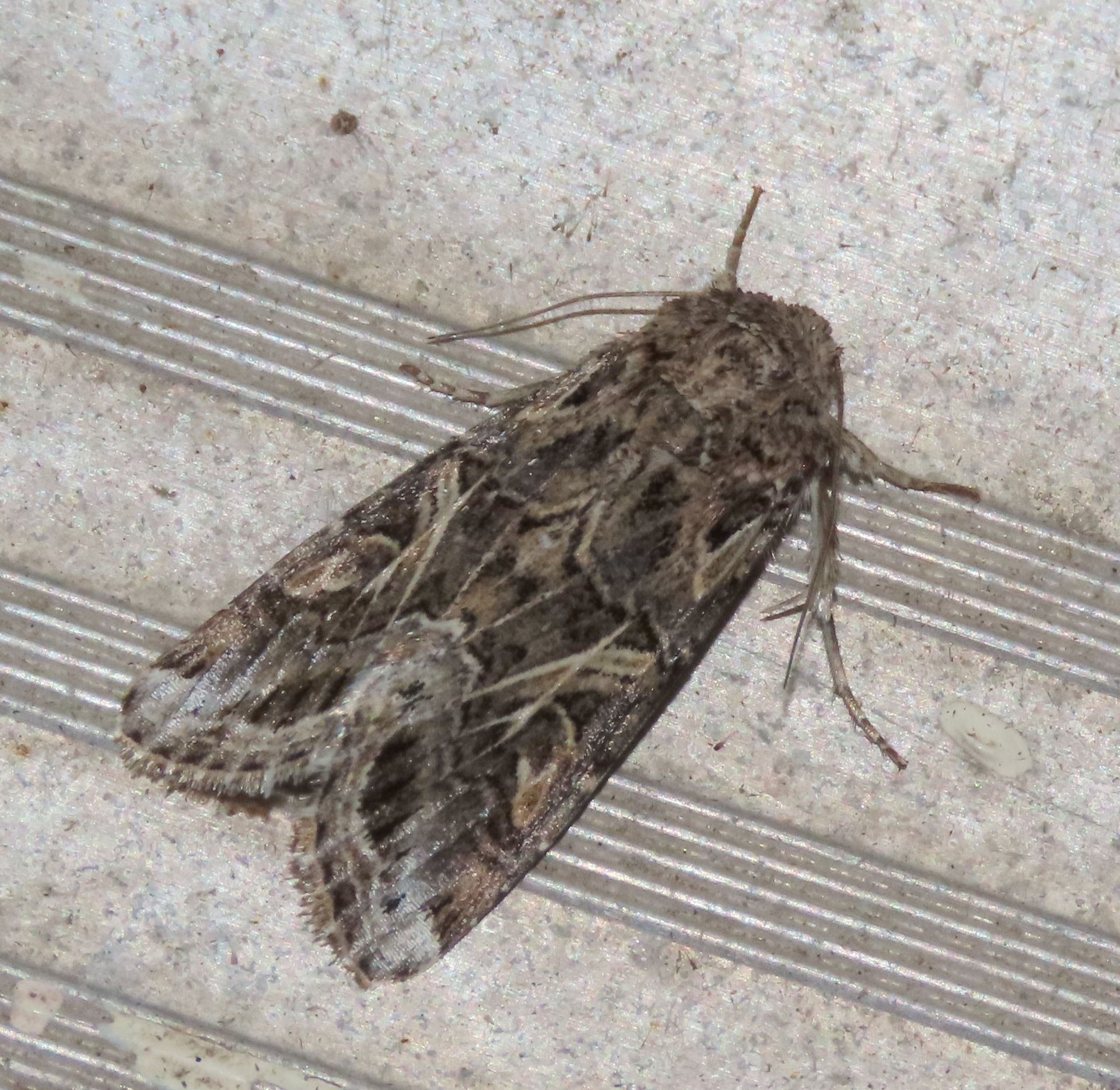

Yellow-striped Armyworm (Spodoptera ornithogalli)
Similar to the more common Fall Armyworm, but with obvious yellow veining in the forewing. Recorded January to March, and June to July, with records in September.

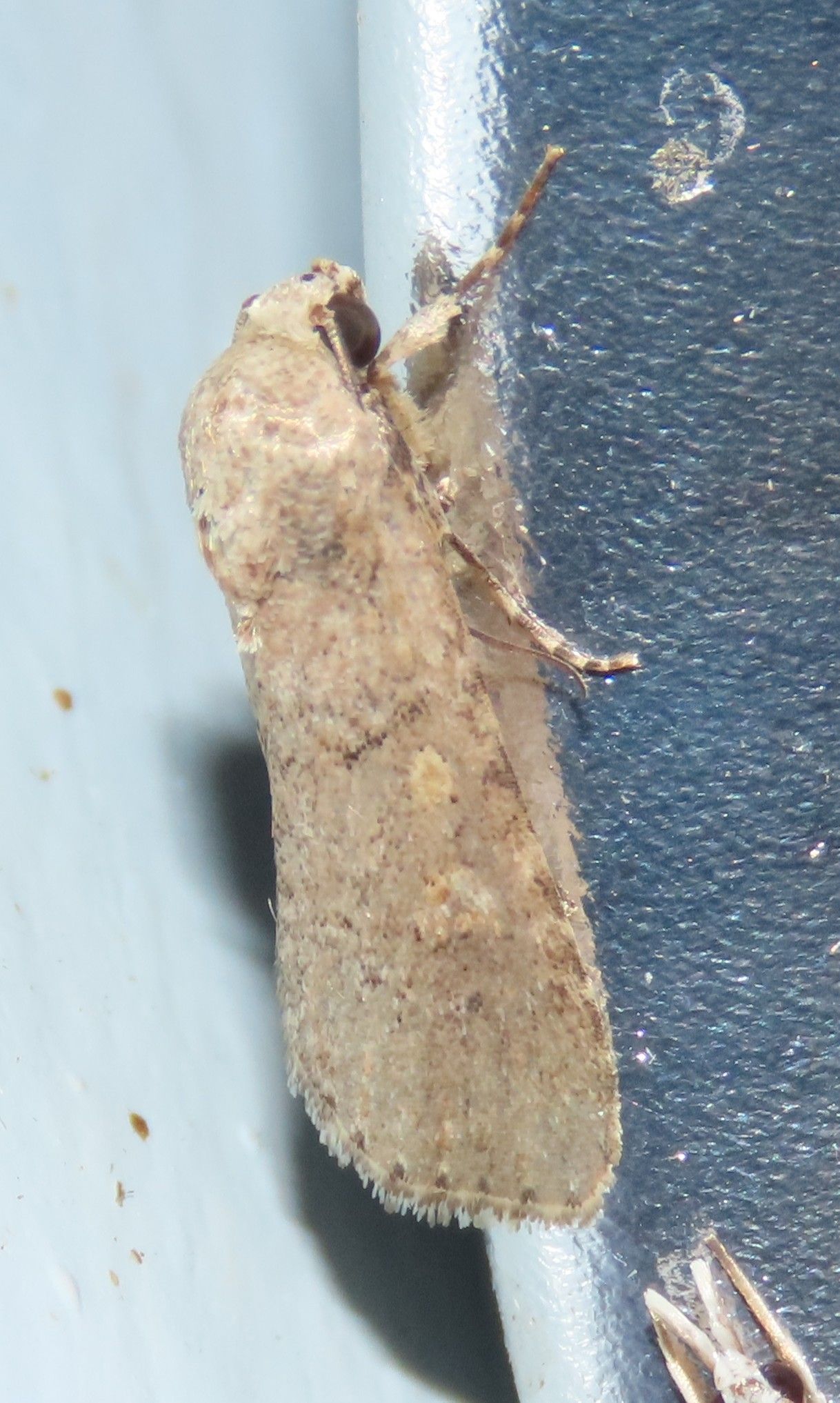
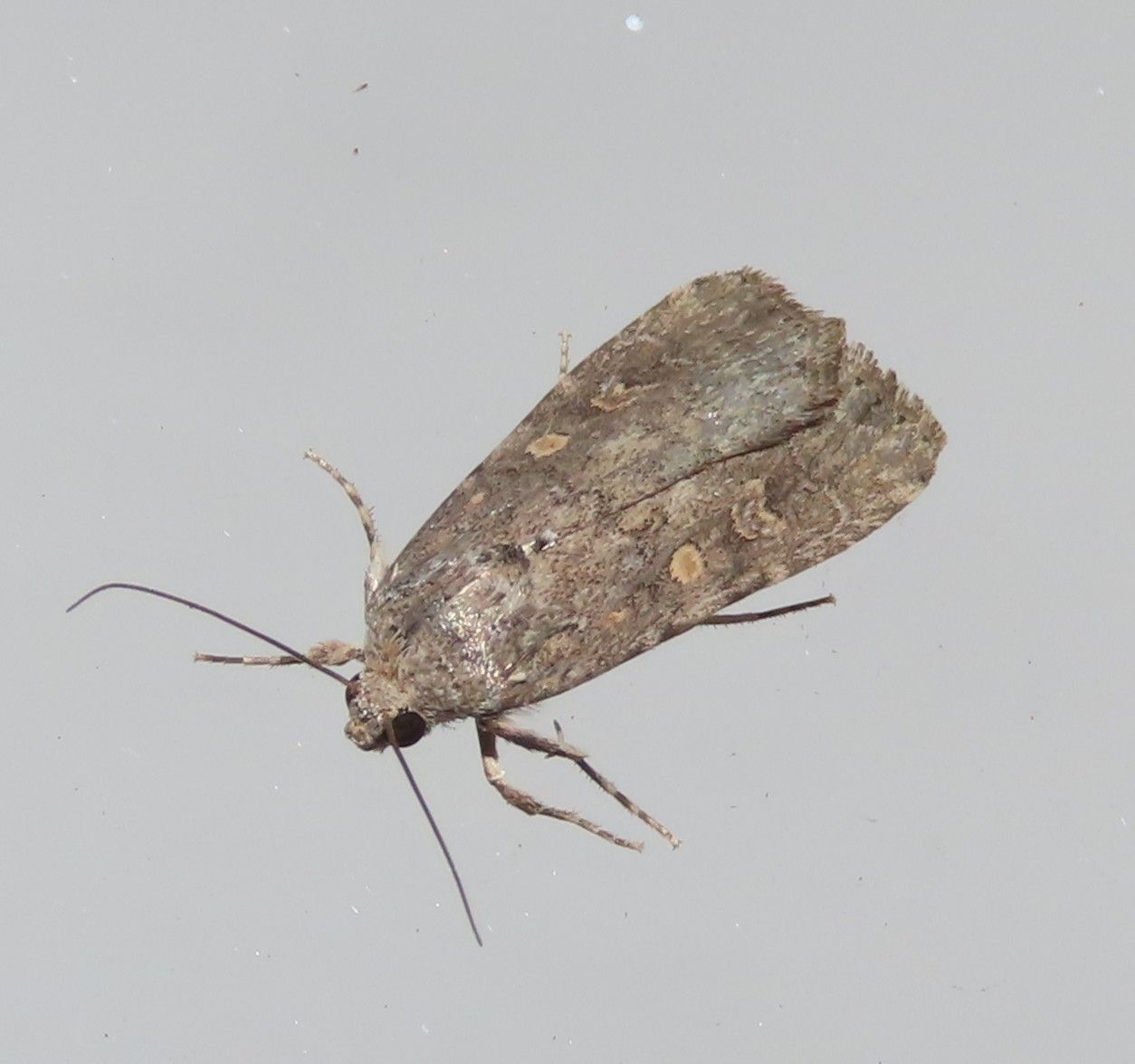
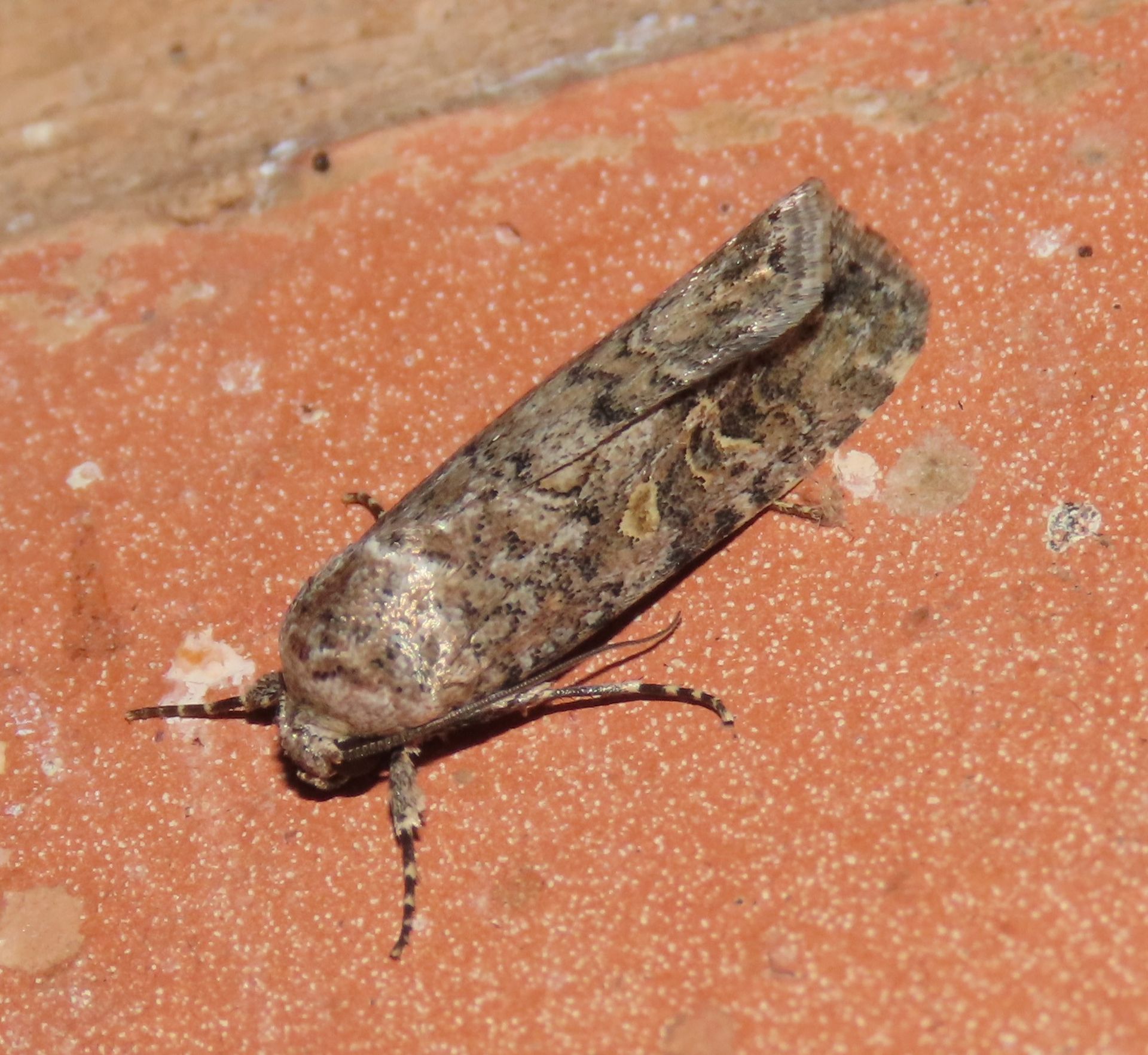
Beet Armyworm (Spodoptera exigua)
Variable. Can resemble female Fall Armyworms, but the best clue is the orange orbicular spot. Recorded May to January, with records in March.

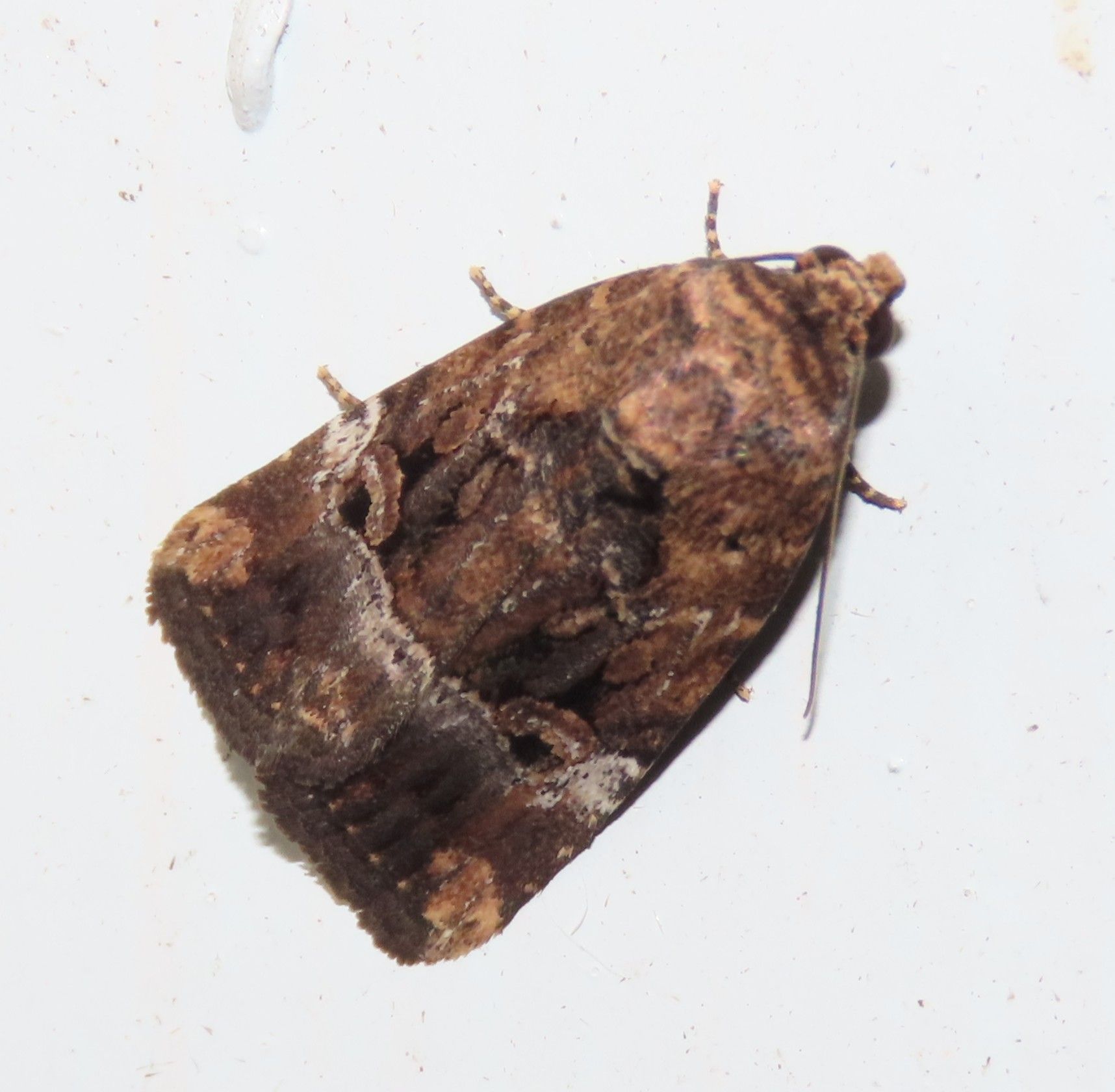
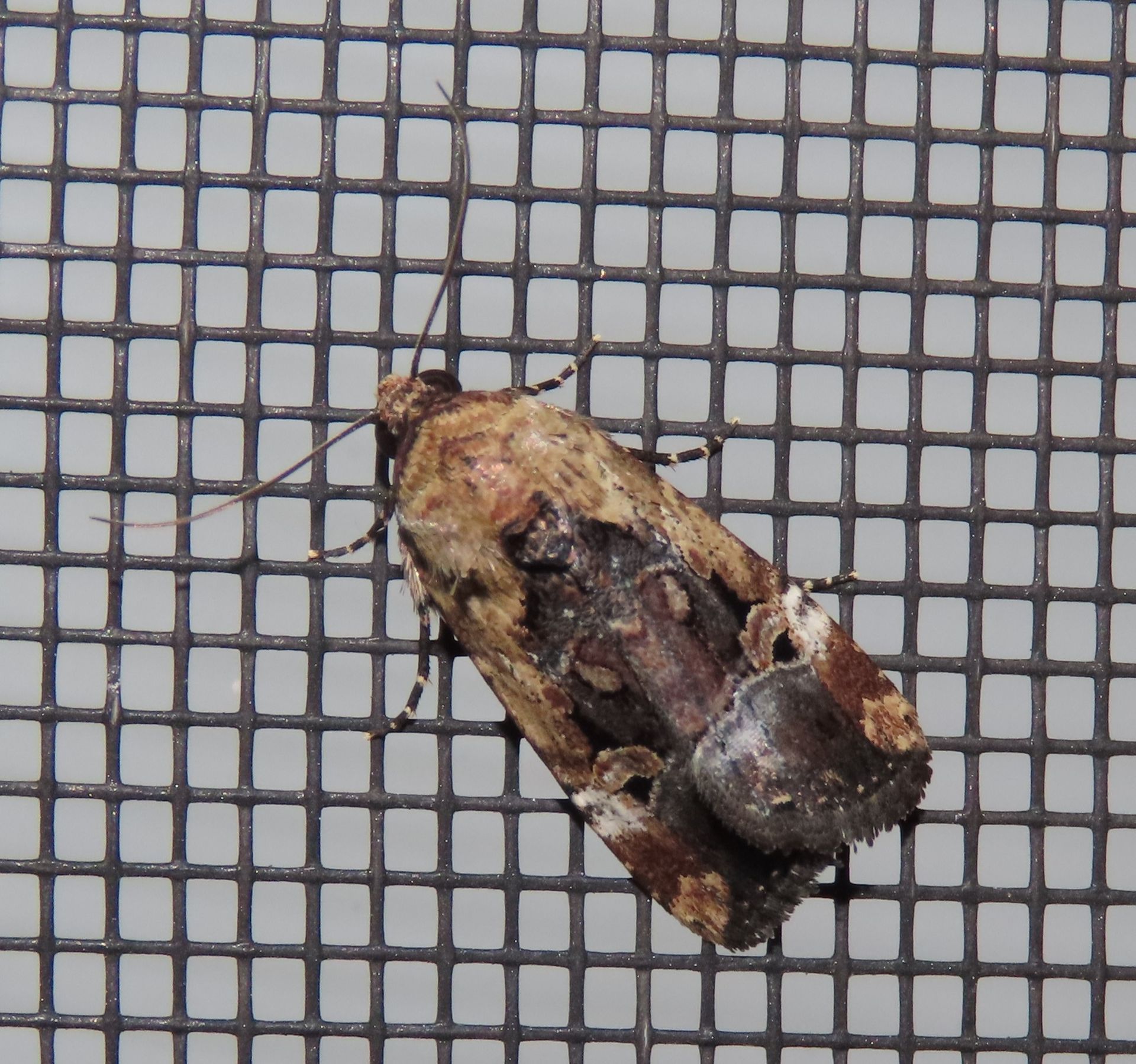
Chalcedony Midget (Elaphria chalcedonia)
Similar to the less common Bicolored Midget (Elaphria agrotina - below) in that it often has a contrasting pale "shawl", but this bug has a thin white PM line that widens at the costa. The reniform spots look incredibly like reproving eyes! Recorded January to March and June to July, with records in September.
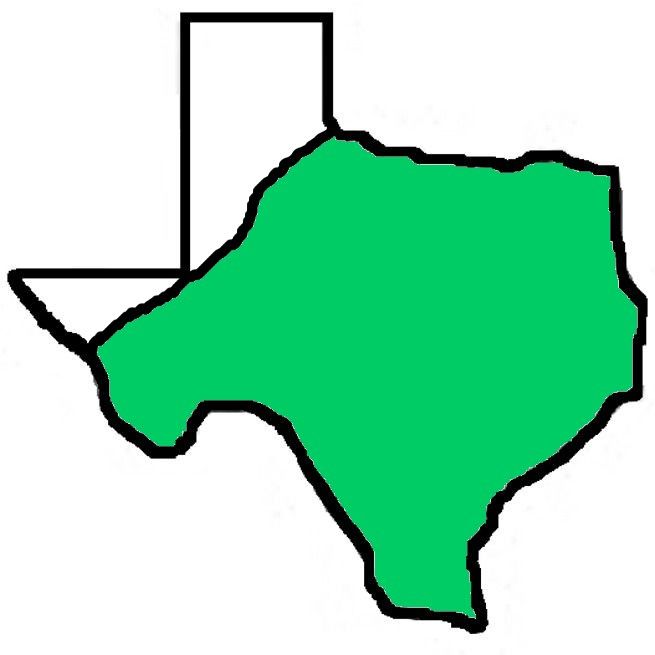
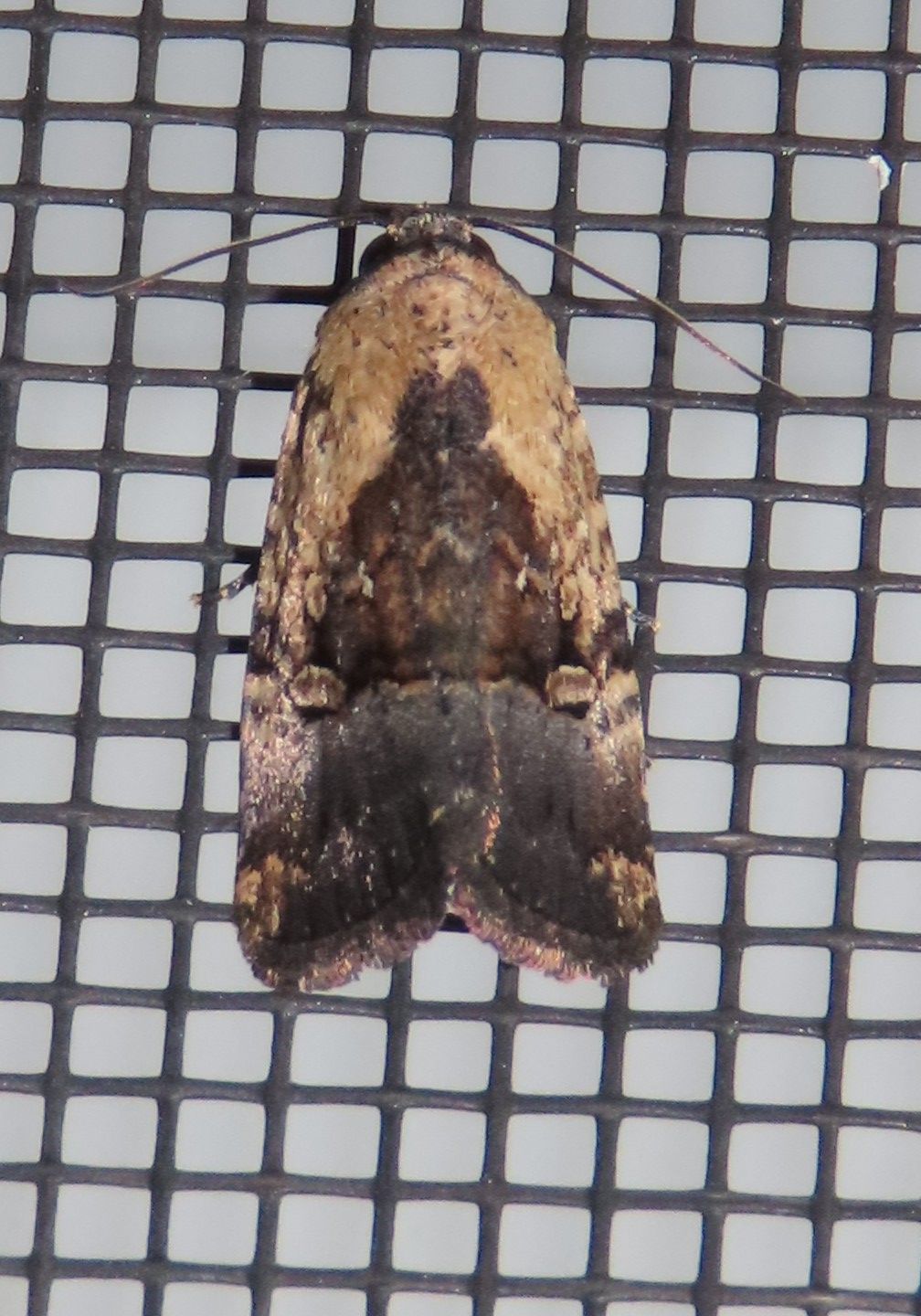
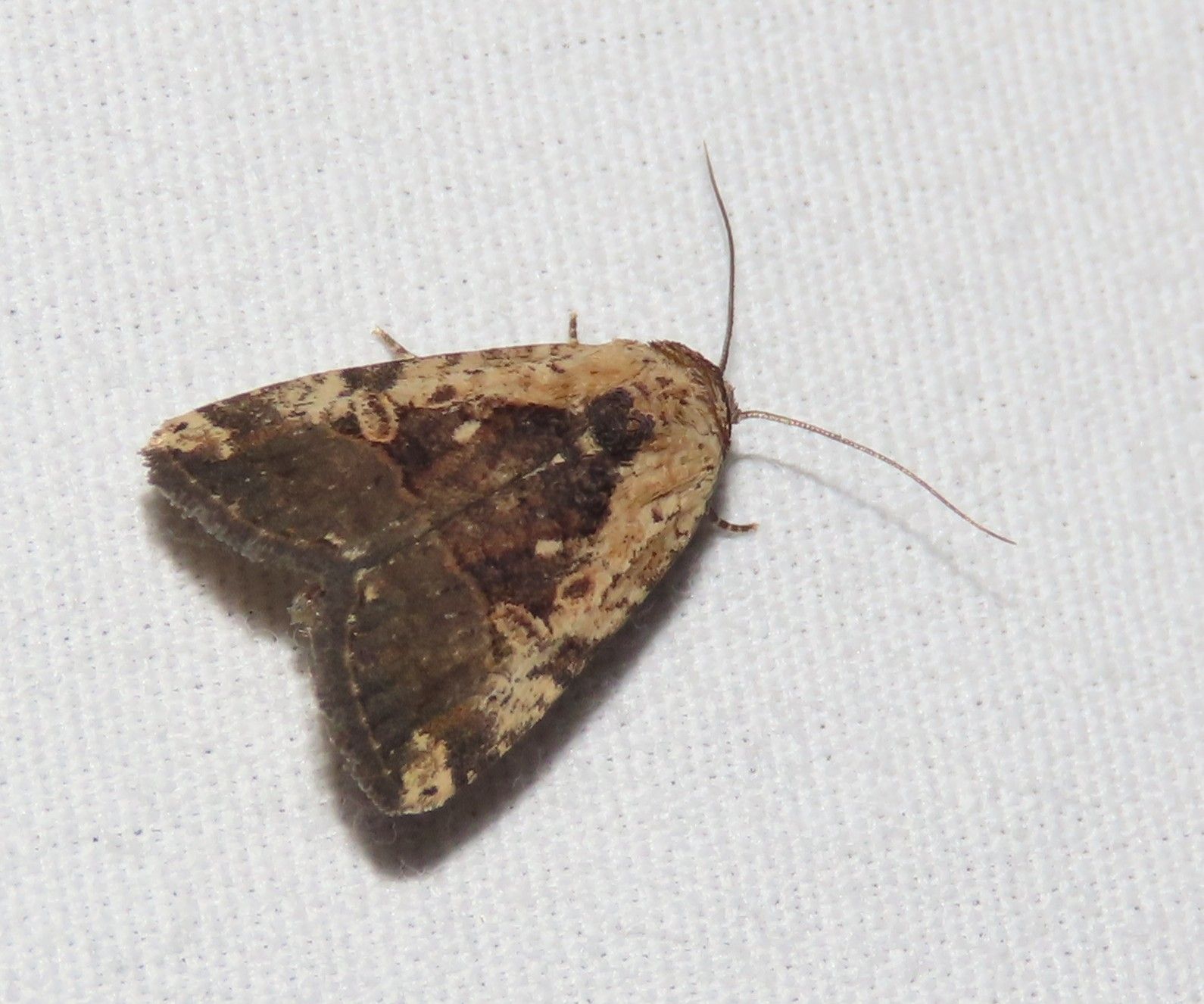
Bicolored Midget (Elaphria agrotina)
Interestingly, the key field mark used to separate this bug from the similar Chalcedony Midget is not the strongly contrasting pattern, but rather the yellowish (as opposed to whitish) PM line! Even this can be problematic, but a midget with this very strong contrasting coloration (as Chalcedony can show a subdued version of this pattern) along with the yellowish PM line probably can be safely called a Bicolored. Recorded May to November, with records in January.

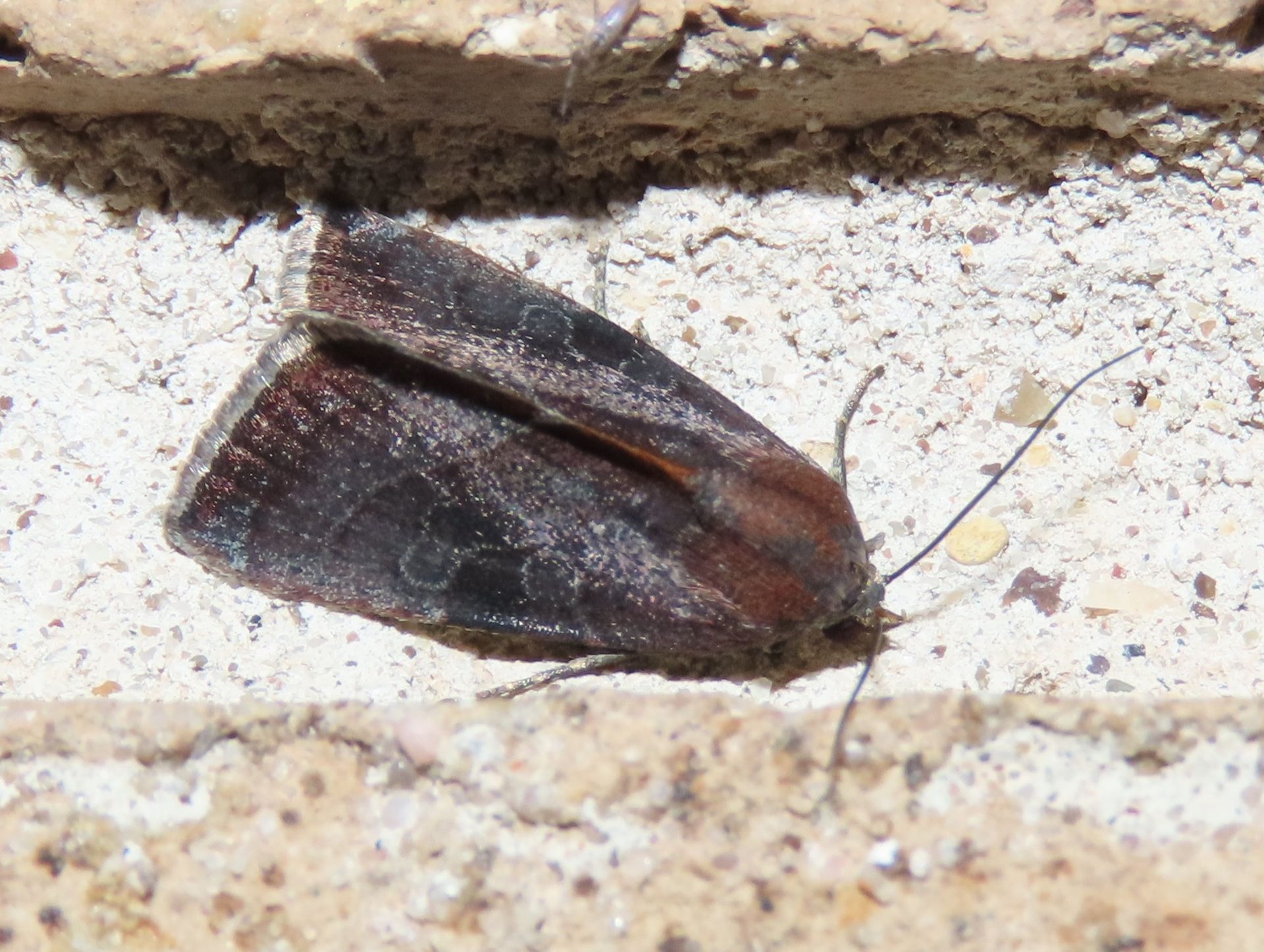


Wedgling Moth (Galgula partita)
Variable. Males can be rusty brown to blonde, but always show a dark spot along the costa midway down the forewing. In darker females (left) this spot can be obscured; look for the hourglass-shaped reniform spot and round orbicular spot, both outlined in white. Recorded October to March, with records in May.


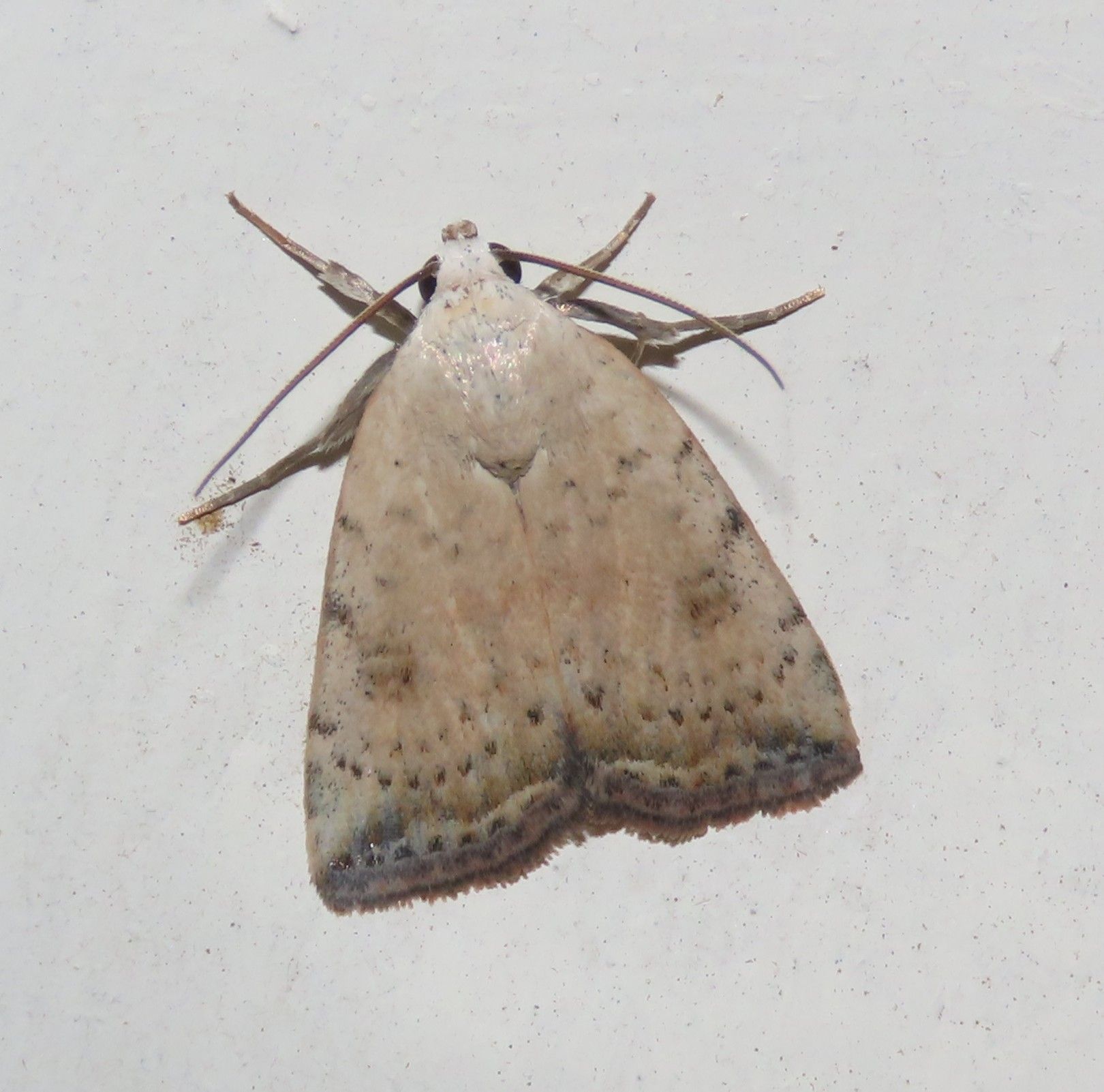
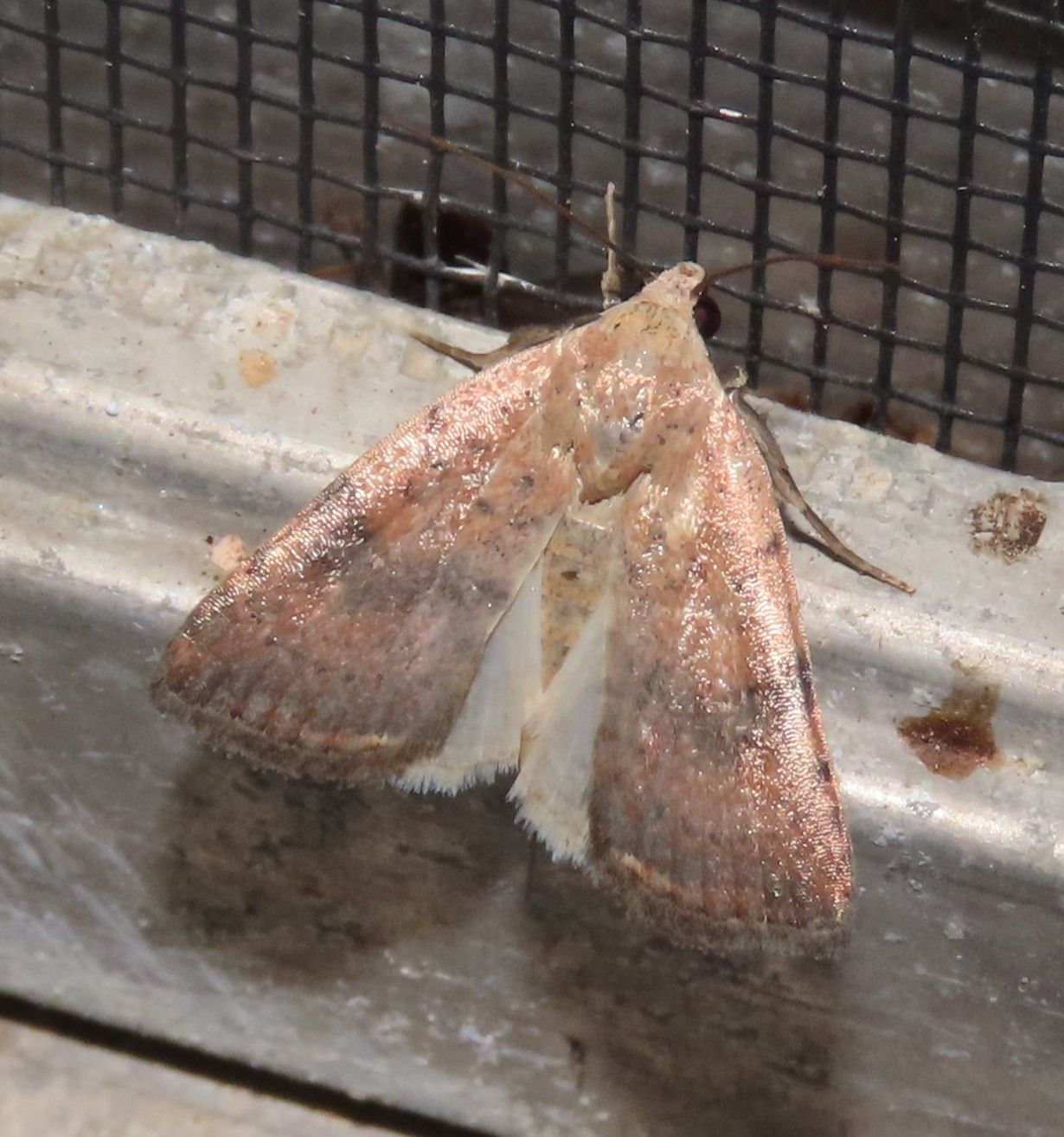
Triplex Cutworm (Micrathetis triplex)
Ground color is variable, but look for the smudgy reniform spot, not always obvious (as in the middle bug). Sometimes this spot is joined to the costa by a smudgy band, as in the bug on the right. Compare with the Wedgling Moth (above) whose spot sits right on the costa. Recorded July to March, with records in May.
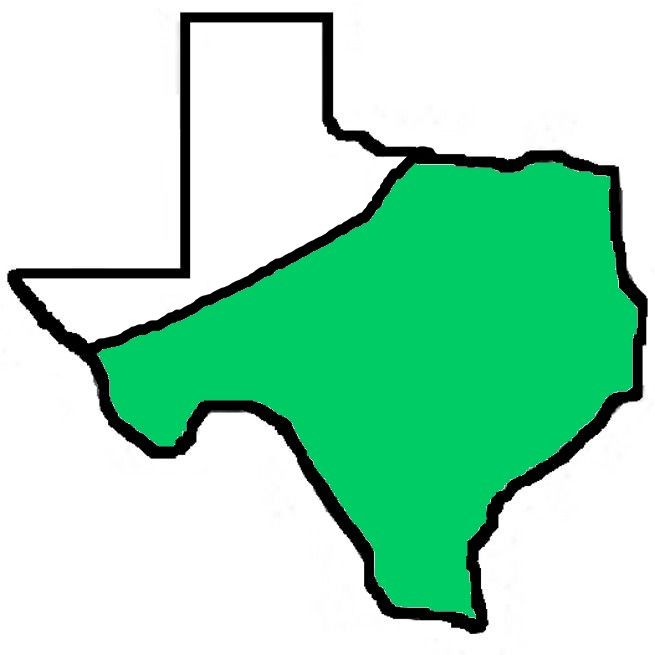

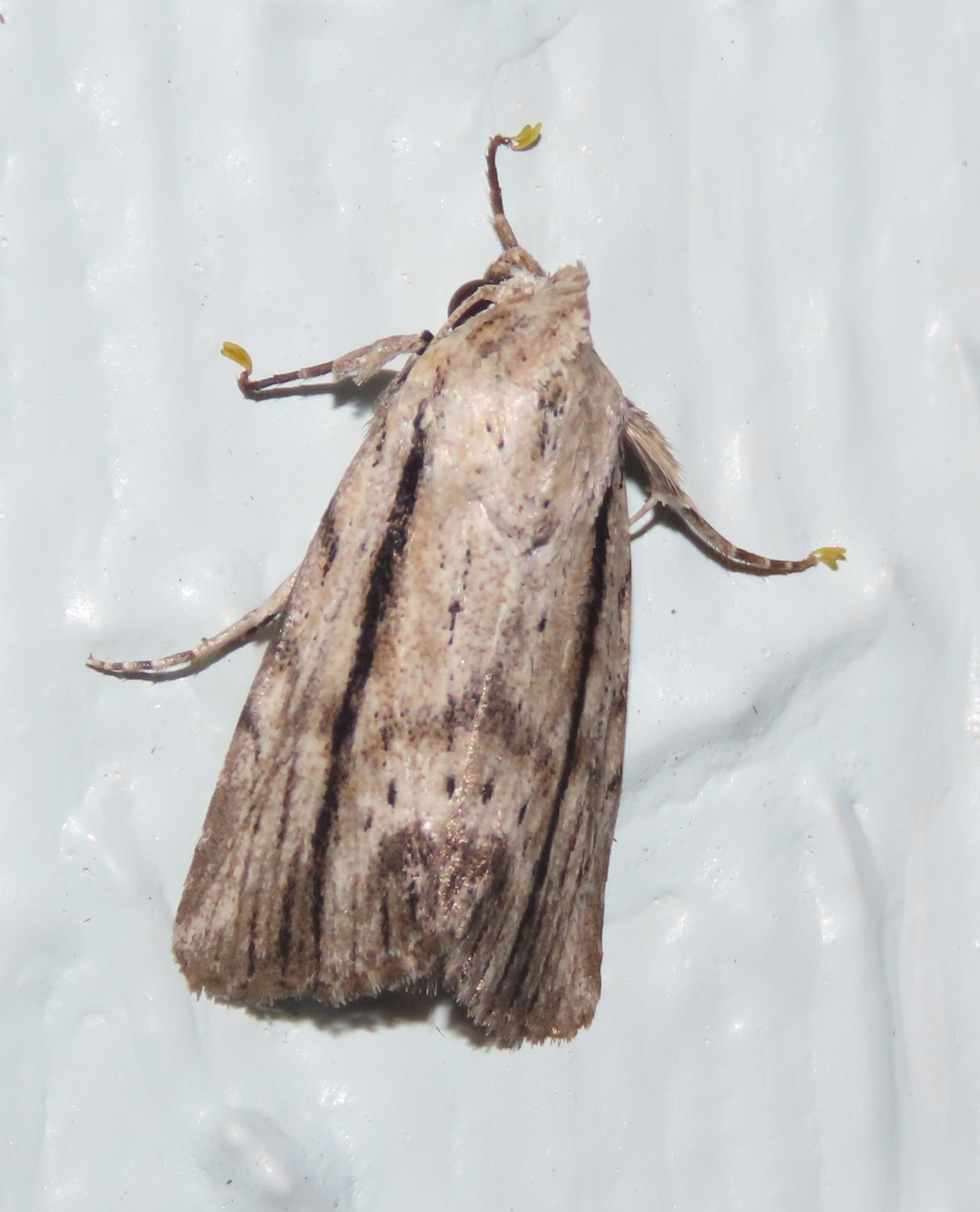
Glass Sallow (Catabenoides terminellus)
The female (right) is much more recognizable than the male with her bold black streak running from the "shoulder" to the tip of the wing. In the male (left), look for black blotches in between the veining in the ST area, and an obscure, curvy PM line made up of small black dots. See also Unknown Wainscot (below). Recorded April to August and October to November.
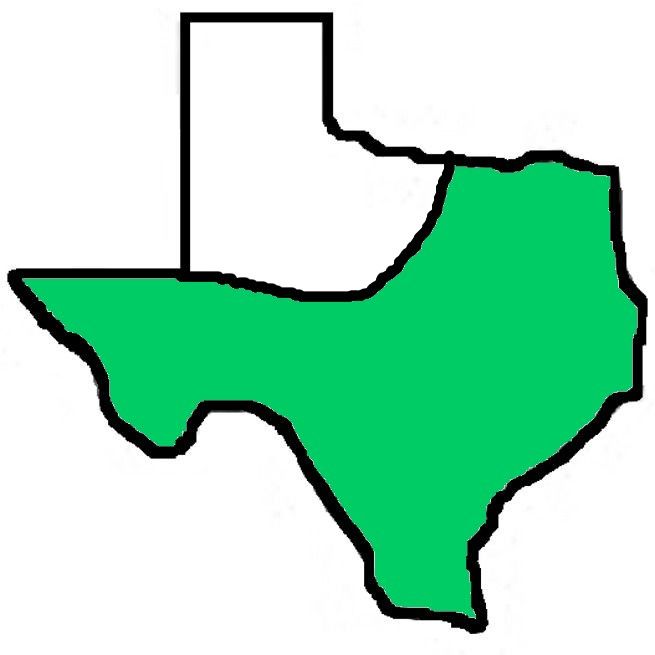

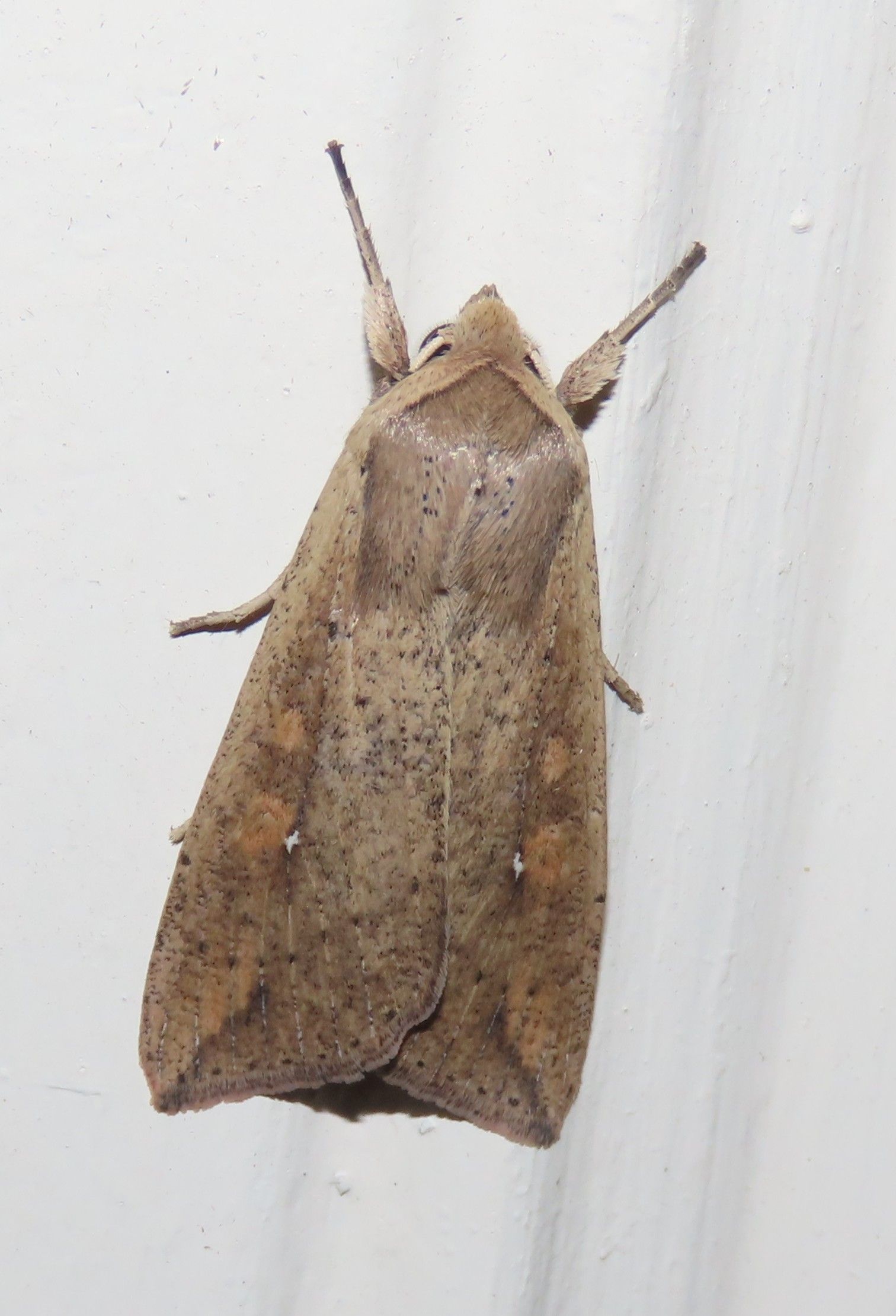
Whitespeck (Mythimna unipuncta)
This relatively large tan moth has a small white spot in the middle of the forewing, often surrounded by a subdued dark shadow. The orange reniform and orbicular spots are often obvious, and on darker individuals the slanting apical line that joins the dotted ST line is more obvious. Recorded June to January.

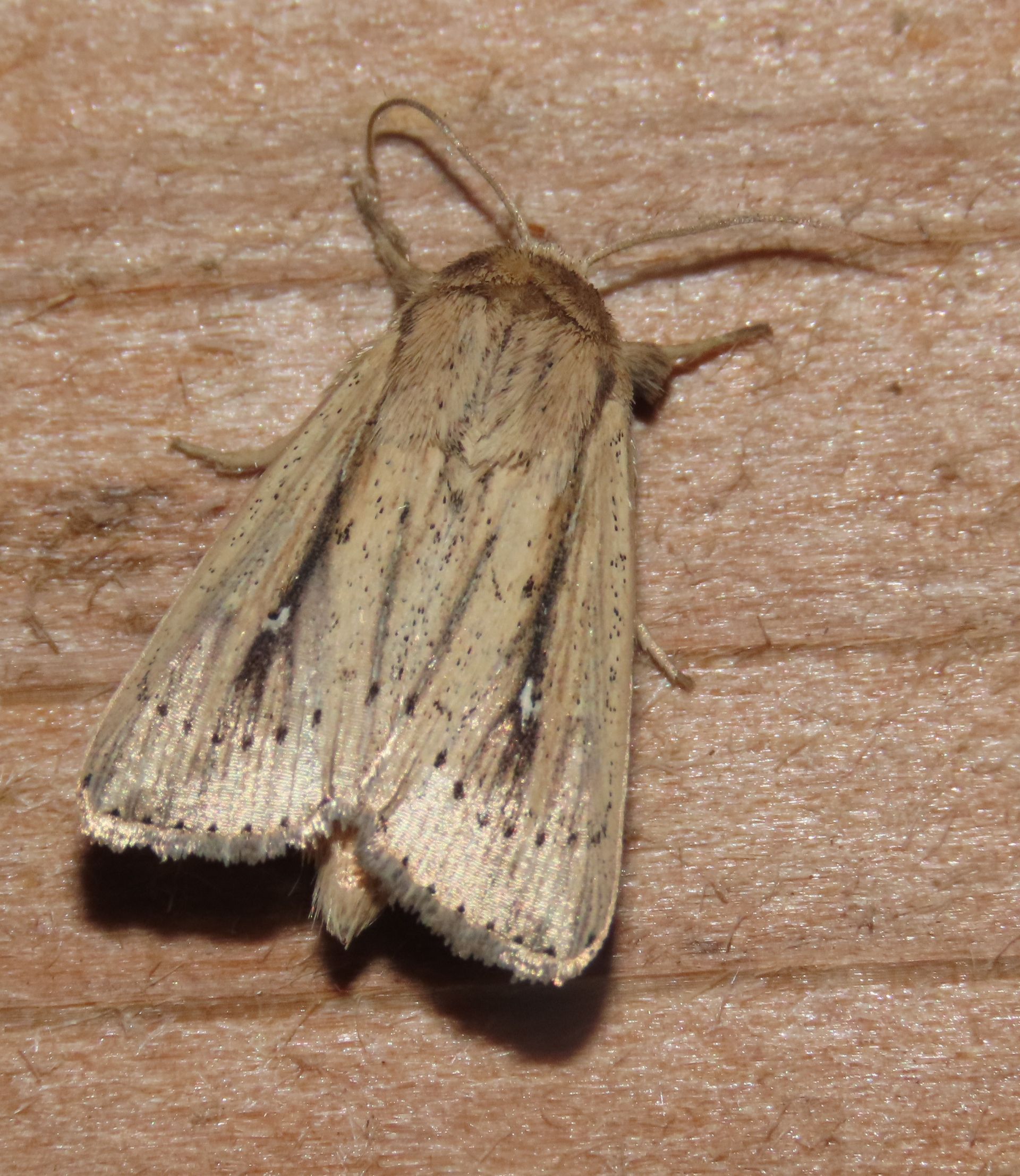
Unknown Wainscot (Leucania incognita)
Like the female Glass Sallow, this bug has a bold dark streak down the center of the forewing, but is larger, with a black-centered white dot near the end of the streak. Said streak does not reach the end of the wing. Recorded February to July.
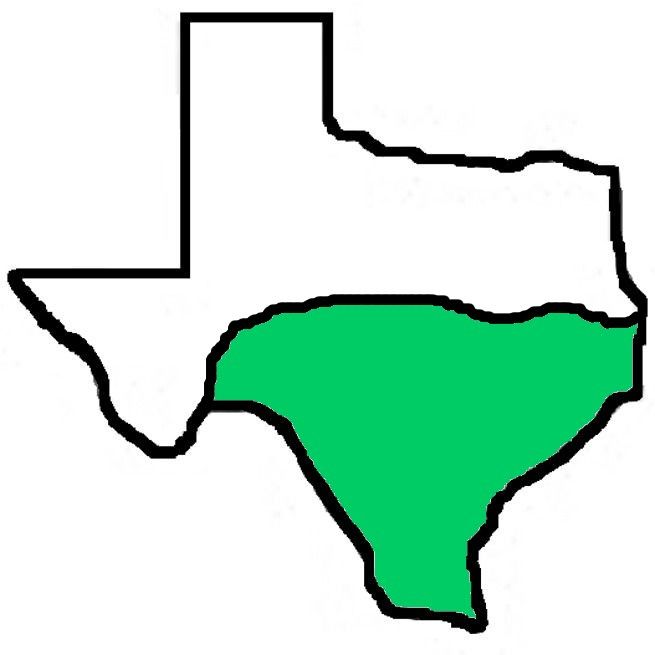
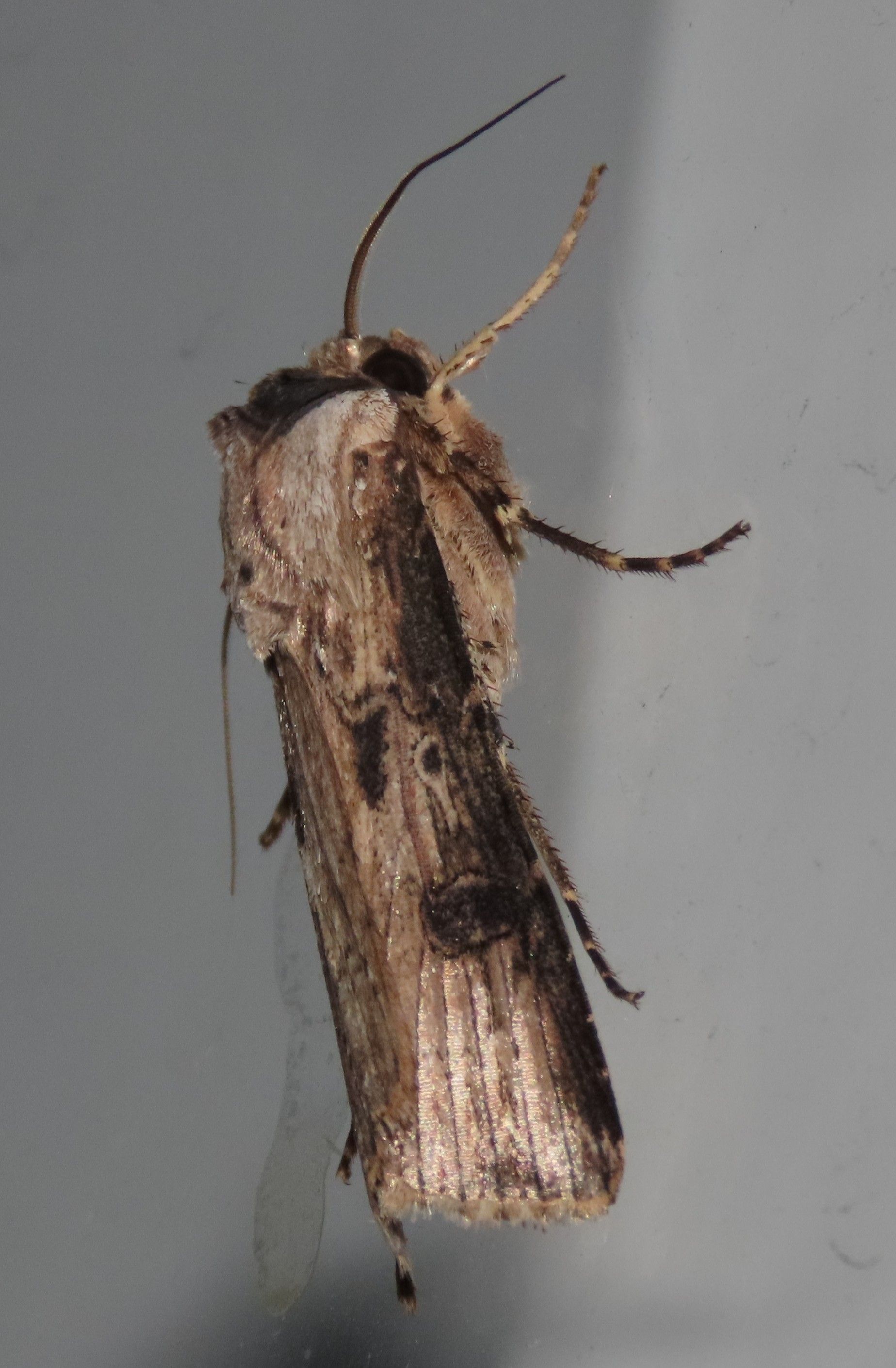
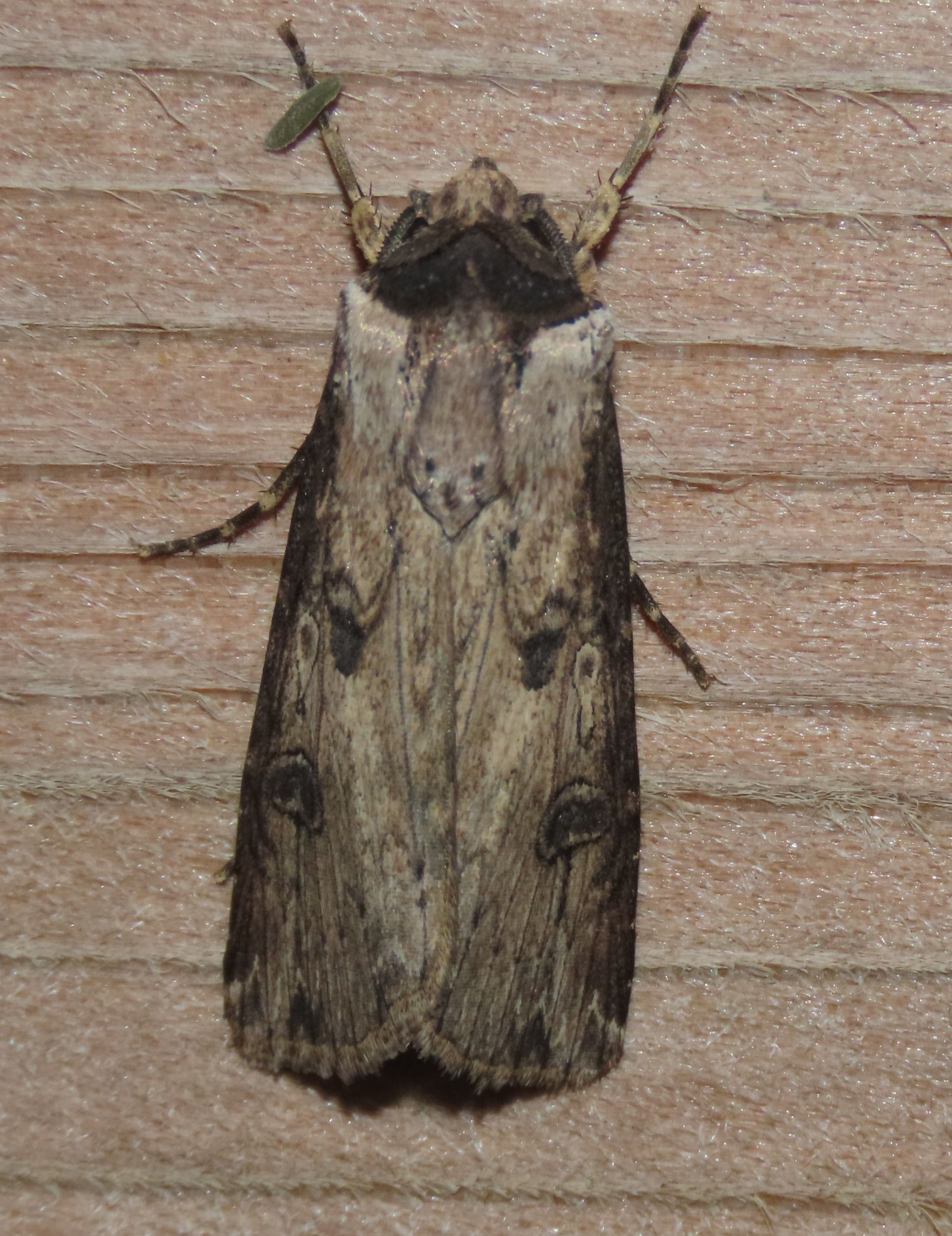

Rascal Dart (Agrotis malefida)
This long, boxy moth is told from other darts by the bean-shaped reniform spot, the paler, keyhole-shaped orbicular spot, and the dark, pointed claviform spot flanking the orbicular. The less common Venerable Dart (Agrotis venerabilis) is similar but the claviform spot joins a bold black basal dash, and the elongated orbicular spot is not keyhole-shaped. Recorded February to June, with records in December.

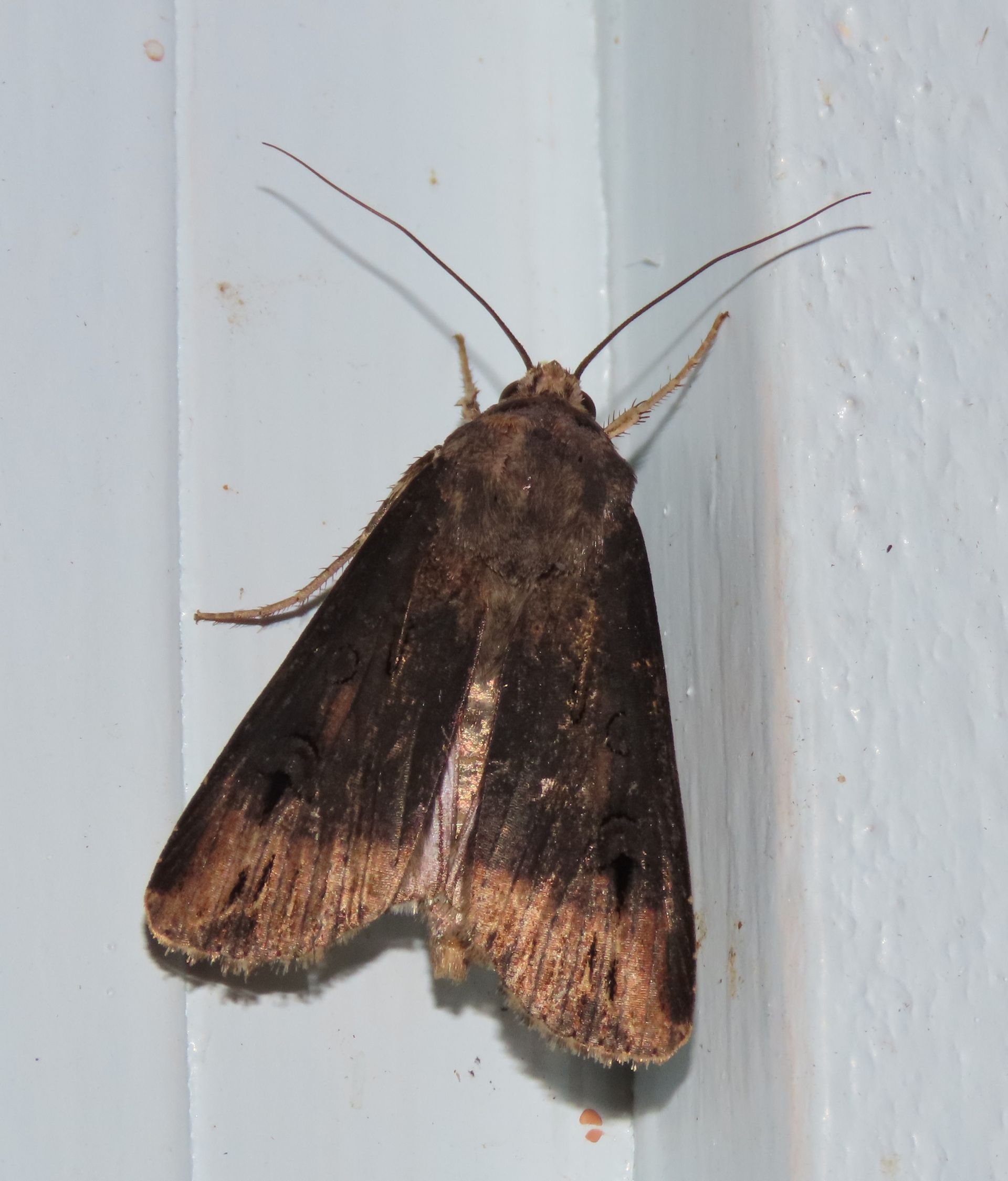

Ipsilon Dart (Agrotis ipsilon)
Typical bugs are very dark with a contrasting straw-colored ST area. But even on worn individuals (right), the thin black wedge striking downwards from the reniform spot is diagnostic. Recorded January to February and September to October.

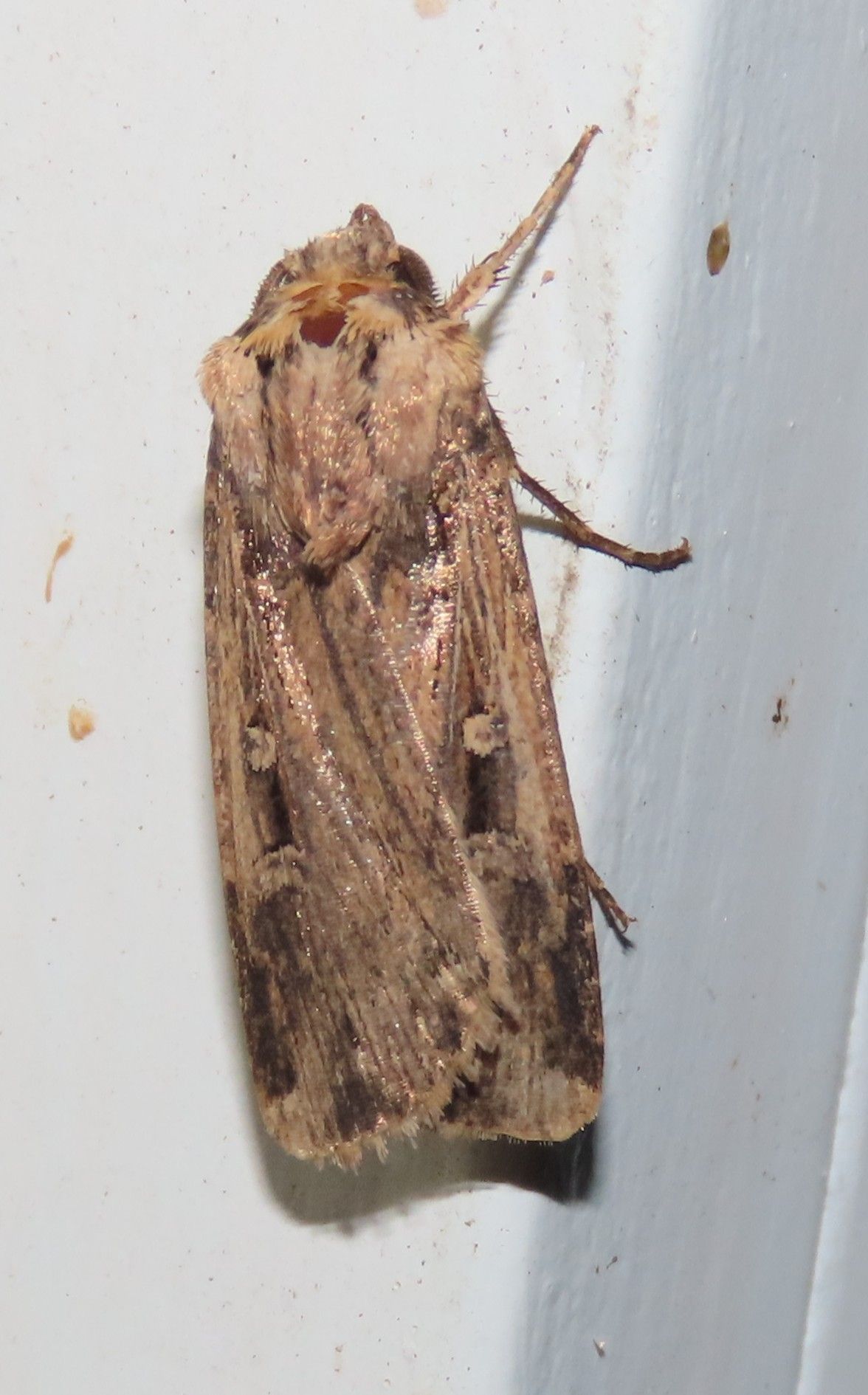
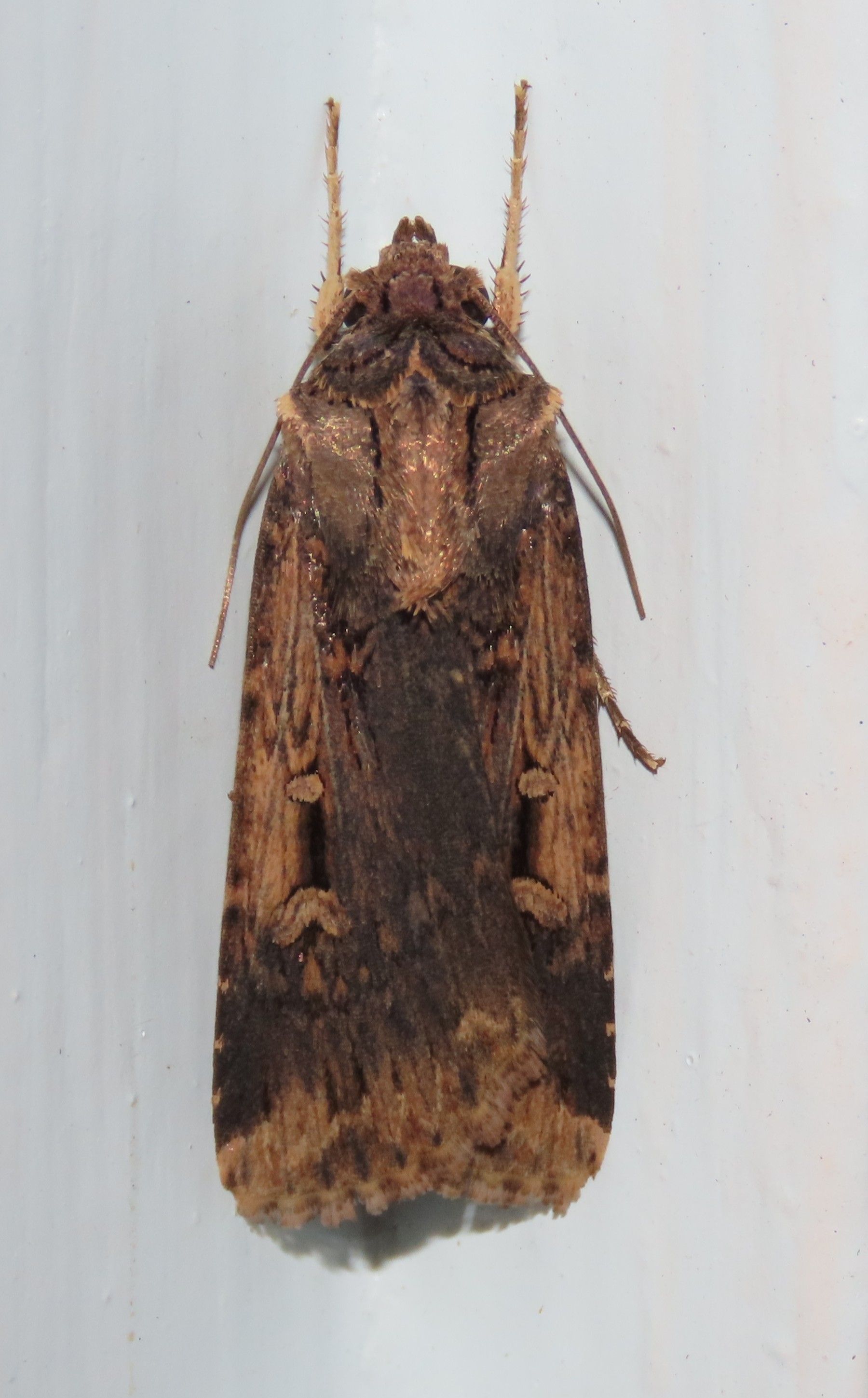
Subterranean Dart (Feltia subterranea)
This moth comes in two color morphs (pale tan, left, and dark brown, right), but both can be readily identified by the thick black band connecting the orbicular and reniform spots. The tan ST area and upper costal area are easier to see on the dark form. Recorded March to August and October to November, with records in January.

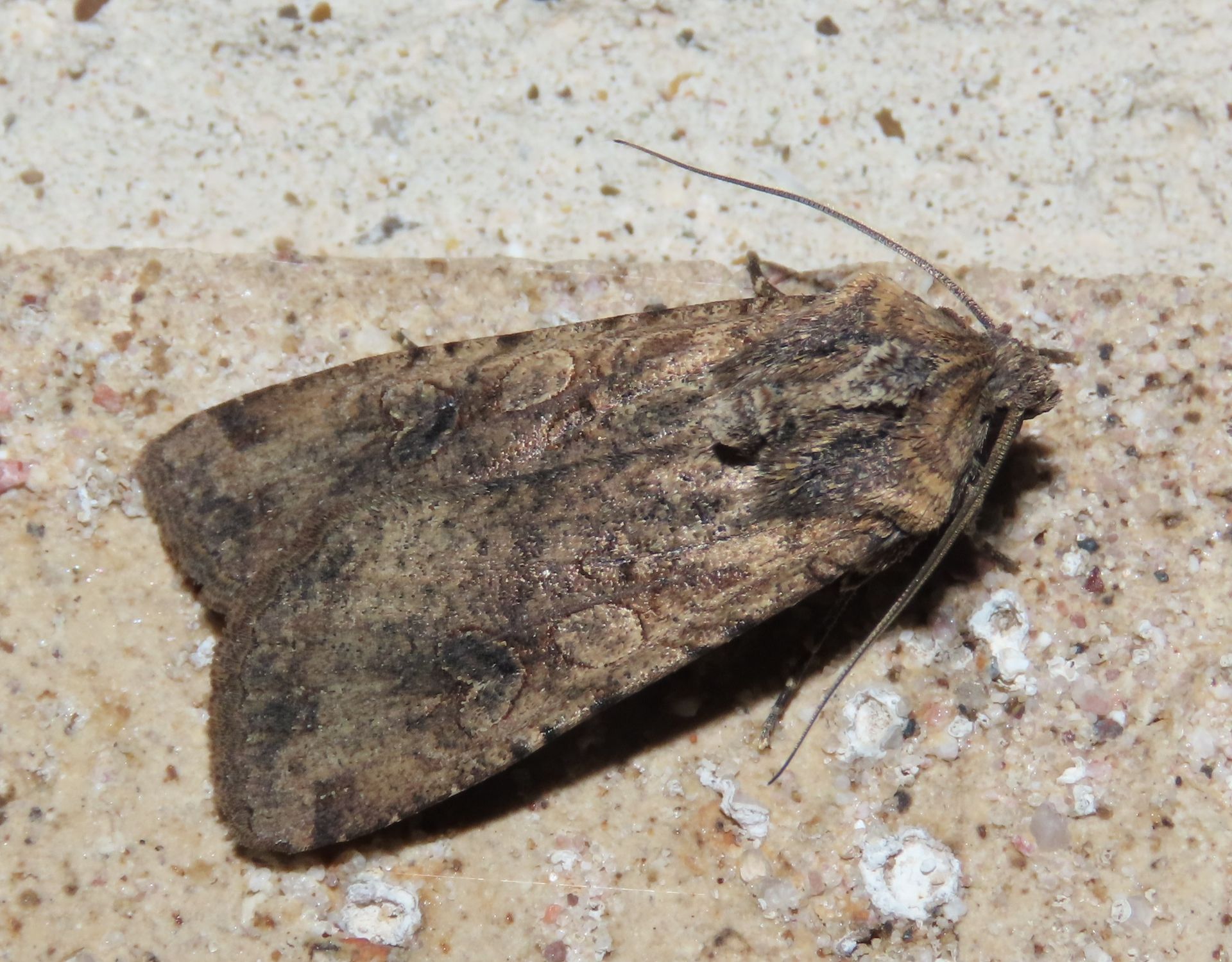

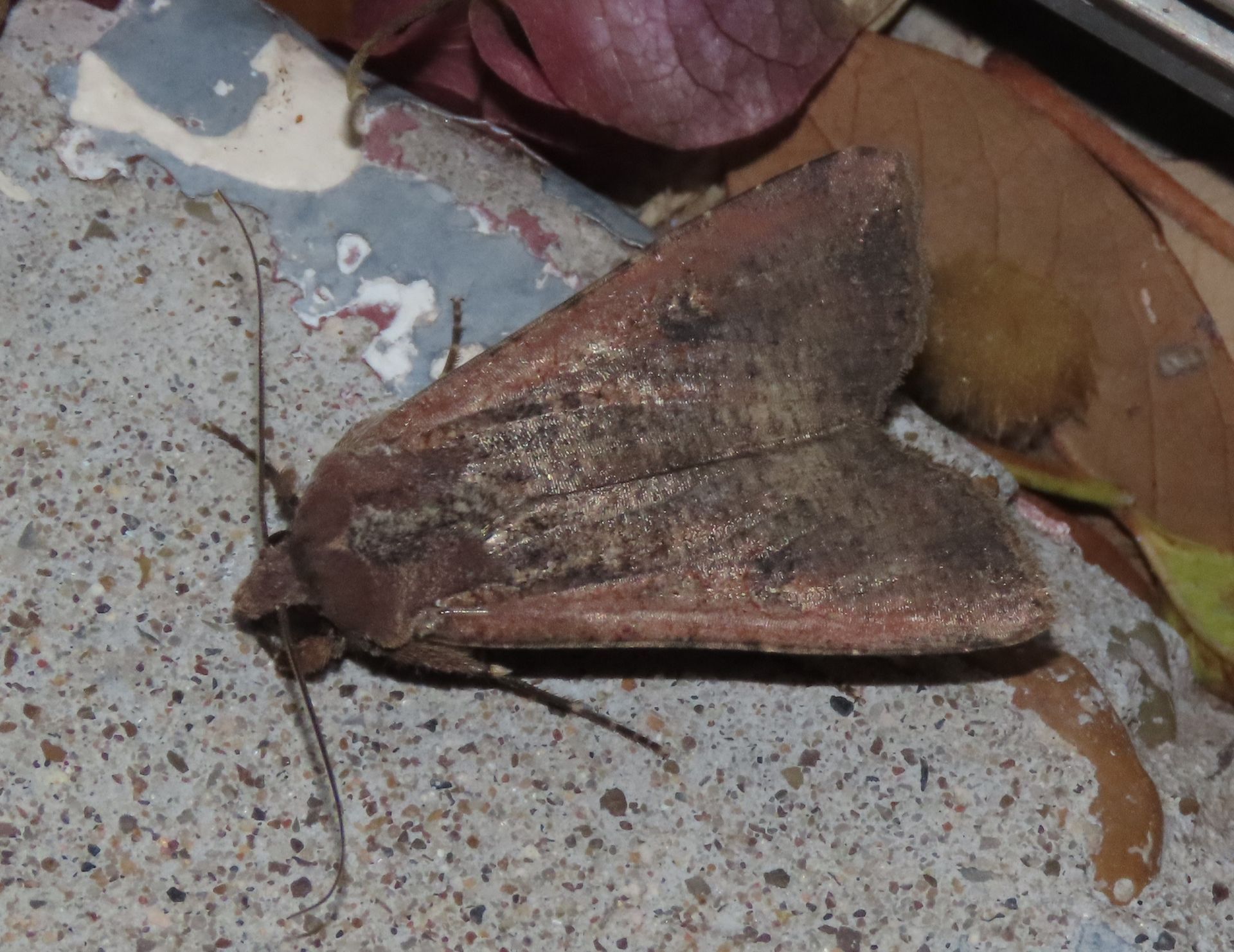
Variegated Cutworm (Agrotis venerabilis)
Also known as Pearly Underwing, this large, variable dart can be told by the large, pale orbicular spot and bean-shaped reniform spot, which may or may not be filled. This pattern can be hard to discern on darker individuals (right), but the dark costal dashes are also a good clue. Recorded October to April.

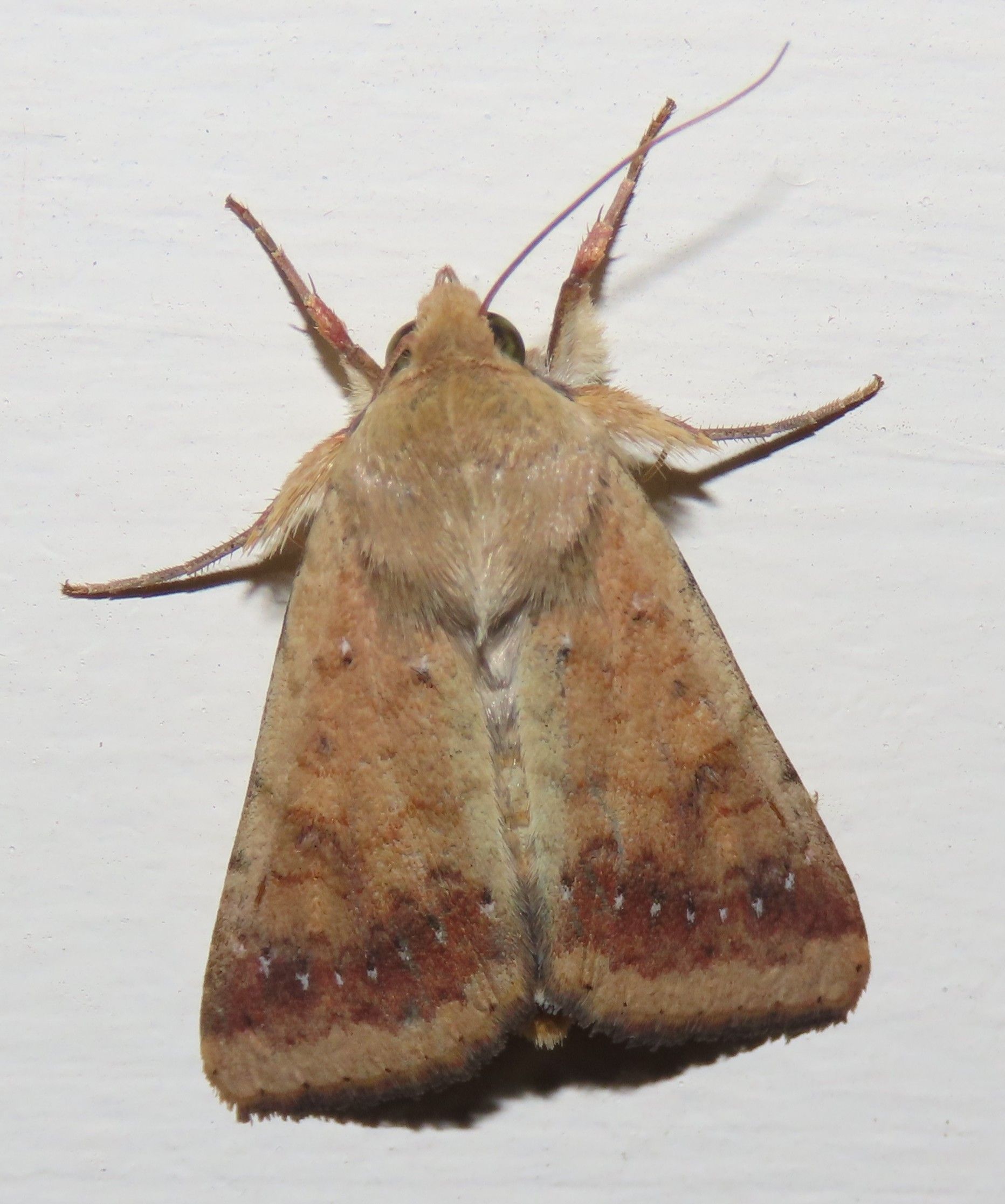
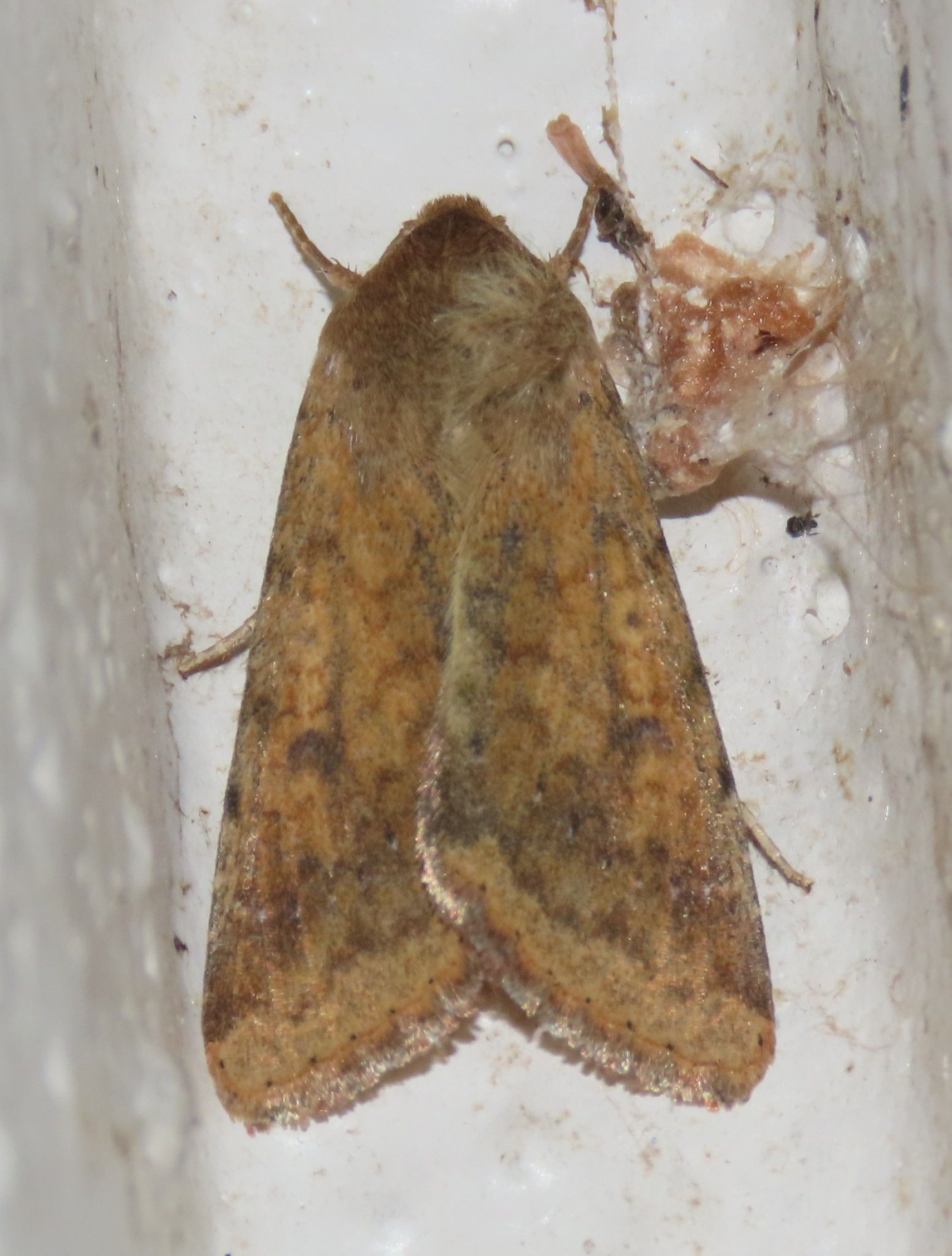
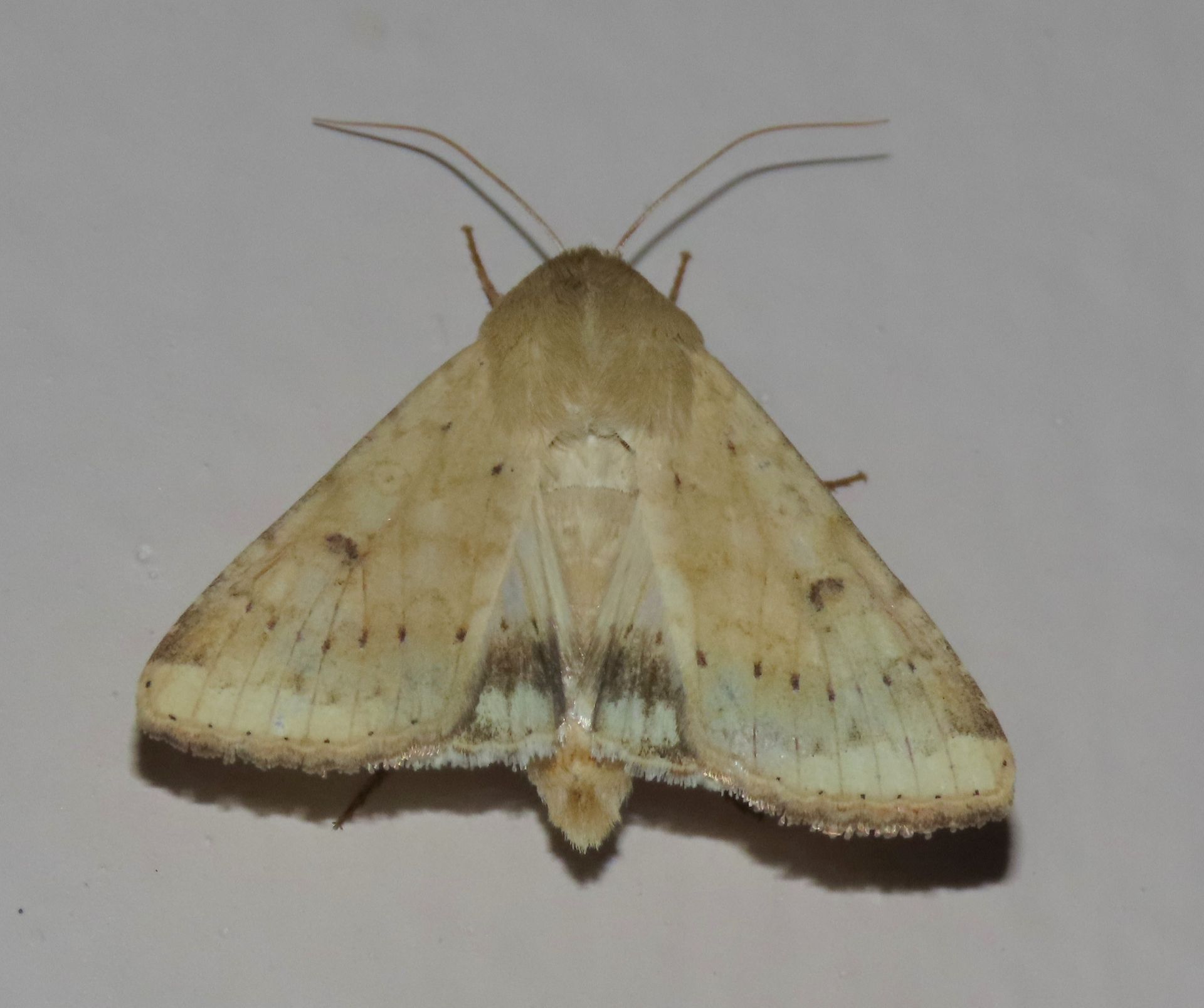
Corn Earworm (Helicoverpa zea)
This widespread moth is often mistaken for a butterfly as it often nectars on flowers during the daytime! Ground color varies from pale yellow to deep ochre, usually with a darker band above the ST area. The dark reniform spot is more obvious on paler individuals (right), and the whitish, black-tipped hindwings are obvious as they hover around flowers! Recorded February to May and July to September, with records in November.

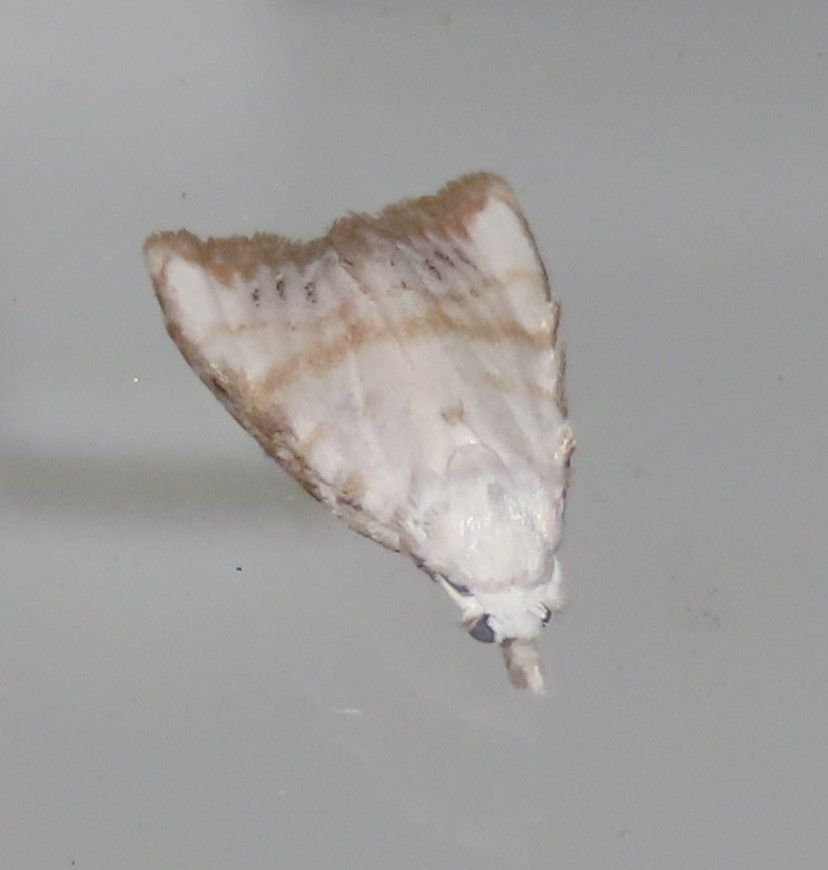
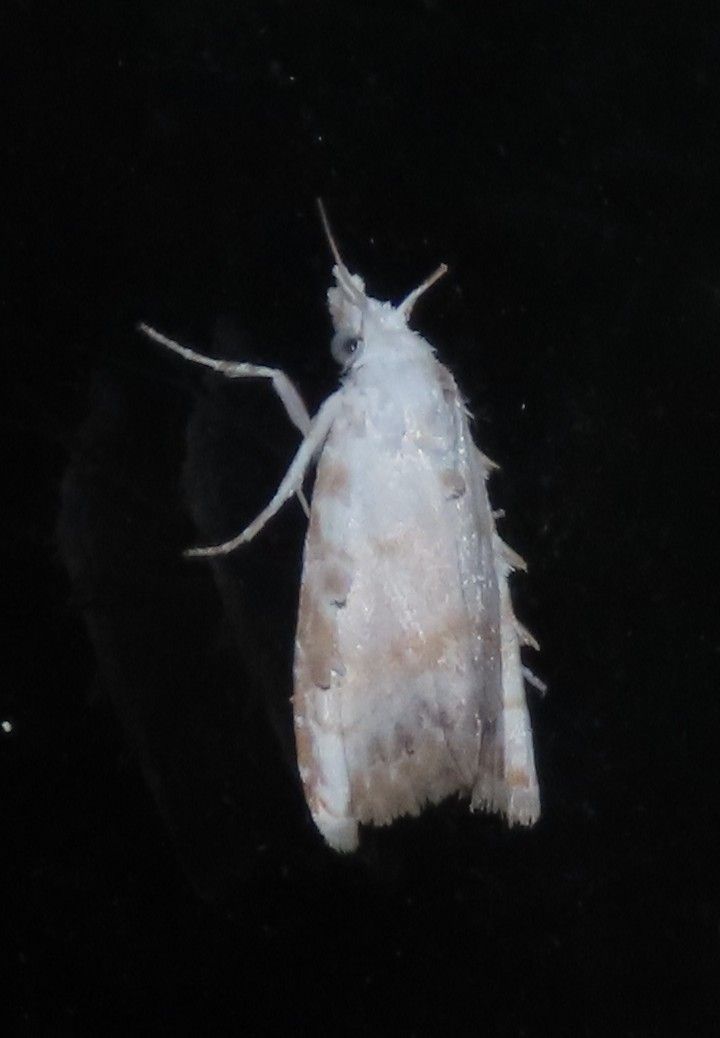
Sorghum Webworm (Nola cereella)
A member of the Nola family, this small pearl of a moth has lovely tawny markings in the AM, PM, and ST areas when fresh, but the main giveaway is the row of tufts along the costa, usually clearly visible. Recorded June to August, with records in March.
